Llandrindod Wells is a town situated in the ancient county of Radnorshire, and today serves as the seat of Powys County Council. It was developed as a spa town in the 19th century, with a boom in the late 20th century, and is the largest town in Radnorshire. The town was regularly utilised by the Welsh Territorial Army units, playing host to a number of annual summer camps, and also hosted troops during both World Wars. The towns hospital was also utilised by the Royal Army Medical Corps for training of new recruits, as well as being used by the armed forces for treating sick and wounded troops. The men of the town who fell during both World Wars are commemorated on the town War Memorial, which is situated in the gardens adjacent to the Old Town Hall in Temple Street, Llandrindod Wells. The memorial is surmounted by a bronze statue of a soldier. The names of the fallen from WW1 are inscribed on three faces of the upper section of the memorial, whilst those who fell during World War 2 were added to the lower section after end of the latter war. There is also a separate memorial plaque to one of the townsmen who was killed in Cyprus in 1992.
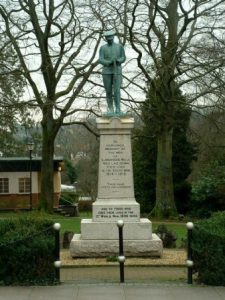
The Great War, 1914-1918
Ronald Hermann Ackerley, Lieutenant, Royal Welsh Fusiliers. Ronald was born at Ashburton, Devon on 15 February 1892, the son of Dr Richard Ackerley and Eliza Helen Ackerley (née Page). Following the death of his mother in 1902, his father remarried, and the family moved to Quisisana, Llandrindod Wells. Ronald was educated at Eton, before entering Merton College, Oxford, where he joined the Officers’ Training Corps. He enlisted into the Royal Welsh Fusiliers on 8 August 1914, and was commissioned into the 3rd Battalion, Royal Welsh Fusiliers. Ronald embarked for France on 1 February 1915 and joined the 1st Battalion, Royal Welsh Fusiliers, which was in Flanders attached to 22 Brigade, 7th Division. The Division had seen heavy fighting during the First Battle of Ypres, where it had helped stem the German drive towards the Channel ports, and was holding the line near Festubert. Ronald joined the battalion in reserve at Rue Bataille on 19 February. The battalion then moved to billets at Laventie, where it received orders for a forthcoming offensive, the Battle of Neuve-Chapelle, before taking over the line in front of Rue Tilleloy and Fauquissart. The Battle opened on 10 March 1915 and raged for three days, for no real gain by the British. On 8 April the battalion moved into billets at Merris, and remained there until returning into the line on 8 May, in readiness to take part in another offensive, the Battle of Aubers Ridge. The 1st RWF moved into the line on 15 May, and on the following morning, 16 May 1915, launched their assault. Ronald was among eight officers of the battalion killed during heavy fighting that day, while altogether the battalion had suffered 600 casualties. The body of the 23-year-old was recovered some days later, and buried in Pont-Du-Hem Military Cemetery, La Gorgue, France. (For more details about the attack, see Volume 1 of my trilogy ‘Welsh at War’).
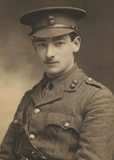
George Herbert Alderslade, Private, 5226, Australian Infantry. George was born at West Ham on 20 September 1893, the son of John Pearson Alderslade and Margaret Alderslade (nee Temple). His father died in 1902, and by 1911 the family had moved to 37 Coronation Road, Neath. George emigrated to Australia in 1912, and found work as a farmer at Baggabilla, New South Wales. His mother then moved her family to Penn Lodge, Temple Street, Llandrindod Wells. George enlisted into the 15th Battalion, Australian Infantry at Warwick, Queensland on 13 January 1916. He embarked at Sydney aboard HMAT Star of Victoria on 31 March 1916 and disembarked at Alexandria on 5 May, joining the Australian depot at Tel-el-Kebir. George was then transferred to the 47th Battalion, Australian Infantry, which had been formed in Egypt on 24 February 1916 as part of the doubling of the AIF, which half of its recruits being Gallipoli veterans from the 15th Battalion, and the other half, fresh reinforcements from Australia. The battalion joined the 12th Brigade, 4th Australian Division and arrived in France on 9 June 1916. The Division saw its first major action during the Battle of Pozieres, and then in the ensuing fighting for Mouquet Farm. The 47th Battalion then had a brief rest period, to rebuild, before moving into the line on 12 November to begin a routine spell of rotation in the trenches. The battalion was relieved on 19 November, moving into support in Switch and Gap Trenches, and supplied working parties over the coming days before moving back into the front line on 26 November. George had been killed in action whilst on a working party near Flers on 24 November 1916. The 23-year-old is buried in AIF Burial Ground, Flers, France. (The memorial shows his name as Aldersley, but it can be seen on various period newspapers of the time which reported on his death that this was a common mis-spelling).
John Arthur Bebb, Captain, Mercantile Marine. John was born at Welshpool in 1868, the son of John and Mary Bebb. The family later resided at Lyndhurst, Temple Street, Llandrindod Wells. John was a long serving Mariner, and had married Margaret Dalglish Gilfillan at Liverpool on 25 March 1896. By the outbreak of war, John was Captain of the Alfred Holt owned steamer, SS Telemachus. She was then requisitioned by the Admiralty for use as a troopship. On 1 January 1917 Telemachus was involved in a collision with another troopship in the North Atlantic. Both ships survived the collision, and no blame was attached to John, but the incident must have remained in his mind, as he committed suicide at La Coruna, Spain on 6 July 1917. John was 48 years old and is buried in the British Cemetery, La Coruna, Spain.
Walter Thomas Berry, Private, 31062, Royal Welsh Fusiliers. Walter was born in Whittington, Gloucester in 1897, the son of Henry and Mary Ann Berry. By 1911 the family was residing at Holly Cottage, Llandrindod Wells. Walter worked as a Jeweller’s Assistant for H. Leckenby, in Middleton Street prior to the war. He enlisted into the Royal Army Medical Corps at Llandrindod on 17 May 1915, but on 2 June 1915 was transferred to the 3rd Battalion, Royal Welsh Fusiliers. On 15 October 1915 he embarked for the Mediterranean, to join the 8th Battalion, Royal Welsh Fusiliers. The battalion was at Gallipoli, attached to 40 Brigade, 13th (Western) Division, and Walter disembarked at Gallipoli on 27 October, joining the battalion in the trenches at Scimitar Hill. Although the main fighting had by now died down, conditions were terrible, with sickness and disease prolific among the troops. Walter had been on Gallipoli for little under a month, when he became ill and was invalided aboard the Hospital Ship Nevassa. He died of diphtheria aboard the ship on 4 December 1915, aged 19 and was buried at sea. Walter is commemorated on the Helles Memorial, Gallipoli.
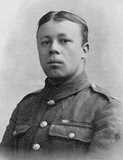
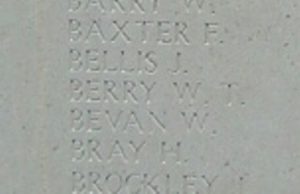
Edward Betts, Private, 202065, Dorsetshire Regiment. Edward was the son of Thomas and Lydia Betts of 2, Penrhiw Villa, Wellington Road, Llandrindod Wells. He worked as an assistant schoolmaster at Holy Trinity School, Weymouth prior to the war. Edward married Maud Mary Nelly Tizard at Weymouth on 30 July 1904 and the couple lived at 17, Newberry Terrace, Weymouth. He enlisted at Weymouth into the Dorsetshire Regiment, and after completing his training was posted to the 2/4th Battalion, Dorsetshire Regiment. The battalion had embarked at Southampton for India on 12 December 1914 arriving at Bombay in early January, and remained in India until 15 August 1917 when it embarked for Egypt, arriving at Suez on 29 August, joining 234 Brigade, 75th Division. The Division then took part in the Third Battle of Gaza, playing a part in the capture of the city of Gaza. The Division then took part in the advance towards Jerusalem, playing an important role in the Capture of Junction Station before taking part in the Battle of Nabi Samwell. Edward was killed in action north west of Jerusalem on 22 November 1917. The 39-year-old is buried in Jerusalem War Cemetery, Israel. His brother, Francis Arthur Betts, died in 1918.
Francis Arthur Betts, Private, 25706, King’s Shropshire Light Infantry. Francis was the son of Thomas and Lydia Betts of 2, Penrhiw Villa, Wellington Road, Llandrindod Wells. He worked as a carpenter prior to the war. Francis had served in France at some time after 1916 with the 1st Battalion, King’s Shropshire Light Infantry, before being transferred to the Labour Corps, his number changing to 413587. Little else is known of his military service, but his health must have broken down, as he was taken to the Reading War Hospital, where he died of disease on 2 November 1918, aged 26. He is buried in Reading Cemetery, Berkshire, where he is commemorated on the Screen Wall.
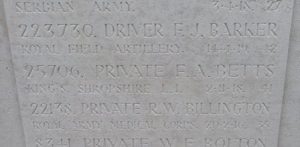
Harry William Birch, Private, 4022, London Regiment. Harry was born in Shepherd’s Bush in 1896, the son of George Birch and Annie Elizabeth Birch (nee Firmin). His mother died in 1901, so Harry was sent to Muller’s Orphanage, in Bristol. By 1911 Harry had been placed by the Orphanage at The Limes, Llandrindod Wells, where he became an apprentice draper for William Oliver. Following the outbreak of war, Harry returned to London, and enlisted at Hammersmith into the London Regiment. He embarked for France on 18 August 1915, and was posted to the 7th Battalion, London Regiment, which was at Lapugnoy, attached to 140 Brigade, 47th (2nd London) Division. The Division then moved to the Haillicourt area where it trained in readiness for the forthcoming Battle of Loos, which was launched on 25 September 1915. The 7th London’s attacked at dawn that day, following the gas cloud, and suffered heavy casualties, with a third of the battalion lost. The battalion then moved into billets at Noeux-les-Mines to rest and rebuild, before the Division went back into action at Hulluch and saw further fighting before going back into billets at Lillers. The Division then moved back to the Loos sector, and its infantry battalions began the normal routine of rotation in the trenches over the winter. At the end of March 1916, the Division moved to the Carency sector, near Souchez, to begin another tour in the Lorette trenches. Early in the morning of 27 April the 7th London’s relieved the 18th London’s in the front line to begin a routine tour in the line. At 10.30 the Germans launched a heavy artillery barrage onto their lines, which lasted until 13.00, causing a number of casualties. During the following days the Germans continued with their artillery fire, also blowing a camouflet under the British trenches. Harry was wounded at some time during this period and was evacuated to the Casualty Clearing Station at Souchez, where he died of his wounds on 30 April 1916, aged 20. He is buried in Cabaret Rouge British Cemetery, Souchez, France.
George Lewis Gilford Botwood, Private, 203690, Gloucestershire Regiment. George was born in Llangynllo, Radnorshire in 1885. He was raised by his grandmother, Anne Botwood, at 2, Wellington Terrace, Llandrindod Wells. George worked as a plumber prior to the war. He enlisted at Llandrindod Wells into the Herefordshire Regiment, and after completing his training was posted to the 1/5th Battalion, Gloucestershire Regiment, which was attached to 145 Brigade, 48th (South Midland) Division. He probably joined the battalion during its efforts during the opening phases of the Battle of the Somme in July 1916. The Division then enjoyed a brief rest before taking part in the Battle of Bazentin, during the second phase of the Battle of the Somme, and captured the ruined village of Ovillers. The Division then took part in the Battle of Pozieres and the Battle of the Ancre later that year. In March 1917 the Division followed the German Retreat to the Hindenburg Line, advancing from their positions at Cappy towards Péronne through Doingt and Tincourt. On 3 April the battalion moved up to Épehy via Villers-Faucon, and took up positions around the village, before settling down on a wet and stormy night. The men awoke to a covering of snow on the following morning, before advancing towards the line running from Ronssoy-Basse Boulogne-Lempire during the afternoon and taking up new positions. On 5 April 1917, 145 Brigade launched an assault from these positions. George was killed in action during fighting around Lempire that day. The 31-year-old is buried in Unicorn British Cemetery, Vendhuile, France.
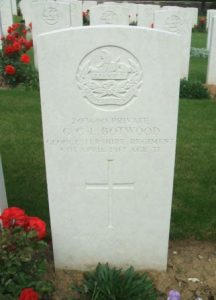
Charles Bradley, Private, 43418, Labour Corps. Charles was born at Lady Court, Shobdon, Herefordshire in 1875, the son of Richard and Jane Bradley. He had enlisted into the King’s Shropshire Light Infantry in 1898 and had served during the Boer War of 1899-1902. By 1911 Charles had left the army and was living with his mother at 9, Bronfield, Ludlow, where he worked as a groom and gardener. Prior to the war he had moved in with his sister, Alice Poston, at 1, Railway Cottage, Llandrindod Wells. Charles re-enlisted into the army following the outbreak of war, and initially joined the Royal Welsh Fusiliers. He was then transferred to the 12th Labour Battalion, Cheshire Regiment, before transferring to the 185th Labour Company, Labour Corps. Charles was badly wounded whilst working near Ypres, following the launching of the Battle of Passchendaele, and was evacuated to the Casualty Clearing Station at Brandhoek where he died of his wounds on 7 August 1917, aged 42. He is buried in Brandhoek New Military Cemetery, Belgium.
Walter Victor Bradley, Private, G/21503, Queen’s Own (Royal West Kent Regiment). Walter was the son of Walter Whittington Bradley and Sarah Jane Bradley (nee Tidman), of Tŷ Cerrig, Llandrindod Wells. He worked as a decorator prior to the war. Walter enlisted at Llandrindod Wells into the Herefordshire Regiment on 30 November 1915 and after completing his training, was posted to France in 1916, joining the 7th Battalion, Queen’s Own (Royal West Kent Regiment), which was attached to 53 Brigade, 18th (Eastern) Division. The Division saw its first major action during the opening of the Battle of the Somme in July 1916, when it took part in the Battle of Albert and then fought at the Battle of Bazentin, capturing Trônes Wood, before taking part in the terrible fighting for Delville Wood. In October the Division took part in the Battle of the Ancre Heights, capturing Schwaben Redoubt, and helped capture Regina Trench. The Division then fought at the Battle of the Ancre, and during the subsequent Operations on the Ancre, before spending the winter on the Somme. In March 1917 the Division followed the German Retreat to the Hindenburg Line, and in May took part in the Third Battle of the Scarpe, which was part of the Arras Offensive. July 1917 saw the Division at Ypres, where it took part in the Battle of Pilckem, and helped capture Westhoek. The Division continued to fight throughout the Passchendaele offensive before being relieved and moved south. In 1918 the Division was one of the Divisions hit by the German Spring Offensive, which was launched on 21 March 1918 and saw heavy casualties as it withdrew. On 8 August 1918 the Division formed part of the force which attacked the German positions around Villers Bretonneux, south of the Somme Valley, during the Battle of Amiens, and then took part in the Battle of Albert, which began the great push by the Allies which ended the war, advancing from 21 August alongside the 38th (Welsh) Division. By 27 August 1918 the Division had reached Trônes Wood, which it had captured two years earlier, and took part in another assault against it. Walter was killed in action during heavy fighting at the eastern edge of the wood that day. The 21-year-old is buried in Péronne Road Cemetery, Maricourt, France. He had written a series of interesting letters to his parents chronicling his experiences from 21 March onwards.
Thomas Newbury Brooks, Private, 41826, South Staffordshire Regiment. Thomas was born in Wheaton Aston, Staffordshire in 1898, the son of Joseph Brooks and Margaret Brooks (nee Evans). By 1911 the family was living in Preswylfa, Llandrindod Wells. Thomas enlisted at Knighton into the Royal Army Service Corps, but upon completing his training was posted to the 2nd Battalion, South Staffordshire Regiment, which was on the Western Front, attached to 6 Brigade, 2nd Division. He probably joined the battalion in the autumn of 1917, when the Division was in the Cambrai sector, and probably saw his first major action there during the Battle of Cambrai. The Division remained here over the winter, and on 21 March 1918 was hit by the German Spring offensive, which was launched along the front running from Croisilles to La Fère. The Division was holding the La Vacquerie sector, and on 20 March the 2nd South Staffs had been relieved from another routine tour in the front line, marching back to Metz, before being taken to billets in Rocquigny via light railway. When the Germans launched their offensive on 21 March, the battalion was ordered to Stand To, and on the following day moved into a new front line running through Morchies. On the following day the battalion was shelled heavily by German artillery, and during the afternoon received reports of masses of German infantry assembling behind Velu Wood. The battalion spent a nervous night waiting for the inevitable onslaught, and the following morning, 24 March 1918, the Germans attacked. Both flanking battalions were broken during the onslaught, and the 2nd South Staffs were forced to withdraw under heavy machine-gun fire, marching back through Gueudecourt to Flers, then to Eaucourt-L’Abbe. Thomas had been killed at some time during the withdrawal that day. The 19-year-old has no known grave and is commemorated on the Arras Memorial, France.
Edward Evan Bufton, Second Lieutenant, York and Lancaster Regiment. Edward was the son of Evan and Eliza Bufton, of Teviot, Temple Avenue, Llandrindod Wells. He had worked with his father as an auctioneer and estate agent prior to the war, and also played football for Llandrindod Wells. Edward enlisted into the Montgomeryshire Yeomanry soon after the outbreak of war and moved to Thetford, then to Buckling with the Regiment, which was attached to the South Wales Mounted Brigade. The Montgomery Yeomanry was dismounted in November 1915, becoming infantry, and on 4 March 1916 Edward embarked with the Yeomanry for Egypt, joining the EEF, and took part in operations against the Senussi. On 4 March 1917 the Montgomery Yeomanry merged with the Welsh Horse Yeomanry to form the 25th (Montgomery & Welsh Horse Yeomanry) Battalion, Royal Welsh Fusiliers, in 231 Brigade, 74th (Yeomanry) Division. Edward was commissioned into the York and Lancaster Regiment on 29 May 1917, and was posted to France, joining the 13th Battalion, York and Lancaster Regiment, which was attached to 94 Brigade, 31st Division. Edward probably arrived after the Divisions ordeals during the Battle of Arras. The Division remained in the Arras sector over the winter and was among the Divisions hit by the German Spring Offensive of 21 March 1918. The Division took heavy casualties during the coming days, before being relieved and moved to Flanders to rest, but got caught up in desperate fighting again following the launching of the Germans Lys offensive on 9 April. In August 1918 the war turned in favour of the Allies, and the Division took part in the Advance in Flanders. Edward was wounded during this period, and was evacuated back to England, where he then contracted pneumonia. He died of pneumonia at Sunderland Military Hospital on 20 November 1918, aged 42. His remains were brought home for burial in Llandrindod Wells Cemetery.
Frederick Charles Burton, Private, 7100, King’s Shropshire Light Infantry. Frederick was the son of Ezekiel and Jane Burton of Wern Villa, Llandrindod Wells. He had played football for Llandrindod Wells prior to enlisting into the King’s Shropshire Light Infantry some years prior to the war. Upon leaving the army and being placed on the Army Reserve, he followed in his father’s footsteps, and was working in London as a Tailor by 1911. Following the outbreak of war, Frederick travelled to Shrewsbury to re-enlist into the King’s Shropshire Light Infantry. On 5 February 1915 he embarked for France, joining the 2nd Battalion, King’s Shropshire Light Infantry, which was attached to 80 Brigade, 27th Division. Frederick joined the battalion at Dickebusch, in the Ypres Salient. The Division was holding the line in the St. Eloi sector, and the 2nd KSLI was taking turns in the line, carrying out the usual system of trench rotation, usually four days in the front, four in support and four in reserve, all the while supplying working parties and carrying out patrols in No Man’s Land. Over the coming weeks, the battalion held various positions in the Ypres Salient, including Railway Wood, Polygon Wood and Potijze. On 25 April 1915 the 2nd KSLI launched an assault on Bellewaarde Wood, to retake some trenches lost by the East Surrey’s on the previous day. Frederick was killed in action during the assault. The 26-year-old has no known grave and is commemorated on the Ypres (Menin Gate) Memorial, Belgium.
Matthew Thomas Cadwallader, Private, 235405, South Lancashire Regiment. Matthew was the son of Richard and Mary Cadwallader, of Kinlet Villa, Howey. He enlisted into the Herefordshire Regiment, and after training was posted to the 11th Battalion, South Lancashire Regiment, which was the Pioneer Battalion to the 30th Division. The Division had moved to France in November 1915, and took part in its first major action during the Somme Offensive. During March 1917 the Division followed the German Retreat to the Hindenburg Line, and in April took part in the Battle of Arras. Later that year the division moved north to Ypres, and fought at the Battle of Pilckem. At the beginning of 1918 the Division was stationed near St. Quentin, and when the Germans launched their Offensive here on 21 March, the Division took part in a desperate rear-guard action before being relieved and moved to the Lys to rest and rebuild. Unfortunately, the division became caught up in fierce fighting following the Germans second offensive, on the Lys, which began on 9 April 1918. Matthew was captured by the Germans during this tumultuous period and taken to a prison camp in Germany where he died on 16 May 1918, aged 26. He is buried in Berlin South-Western Cemetery, Germany.
Charles Cheffers, Private, 238899, Herefordshire Regiment. Charles was born at Helston, Cornwall in 1879, the son of John and Elizabeth Jane Cheffers. He had moved to Llandrindod Wells prior to the war, and worked at the Bridge Hotel. Charles married Amelia Constance Davies, of Cefnllys, in 1912, and on 8 November 1915 their only son, William Charles Cheffers, was born at their home at Idsall, Craig Road. Charles enlisted at Llandrindod into the Herefordshire Regiment, and was posted to Palestine towards the end of 1917, joining the 1/1st Battalion, Herefordshire Regiment, which was attached to 158 Brigade, 53rd (Welsh) Division. Charles possibly arrived in time to take part in the capture of Jerusalem, and then in the subsequent continued advance northwards, where the EEF drove the Turks out of Palestine. On 1 June 1918 the 1/1st Herefords left the 53rd Division and embarked for France, joining 102 Brigade, 34th Division at Proven, in the Ypres Salient. The battalion then carried out specialist training, to get ready for the vastly different conditions it would face on the Western Front, before the Division moved to positions near Puisieux, some four miles west of Bapaume, the 1/1st Herefords reaching the village on 21 July. During the following night the battalion marched forward to take up positions in the front line, and received orders for an assault, which was launched on the morning of 23 July 1918. The battalion arose from the trenches at daw, only to find the fields ahead full of high standing corn, and the men found it difficult to advance. Heavy casualties were suffered from German machine-gun fire, forcing the withdrawal of the battalion, with the loss of 238 men. Charles had been killed in action during the failed assault that day. The 39-year-old is buried in Raperie British Cemetery, Villemontoire, France.
Walter Louis Coleman, Private, 21135, Canadian Infantry. Walter was born at Disserth, Radnorshire on 20 January 1874, the son of Edwin Coleman and Eliza Coleman (nee Meredith). His father was the original owner, and builder, of the Hotel Metropole, in Llandrindod Wells, but died on 9 October 1876. Walter was raised at 2, Denham Cottage by his widowed mother, before moving to Shrewsbury to live with a brother for several years. By 1911 his mother had remarried, and Walter was living with her at Hill Crest, Llandrindod, assisting with the family lodging house. Walter emigrated to Canada prior to the war and found work as a Timekeeper. He enlisted at Valcartier into the 11th Battalion, Canadian Infantry on 23 September 1914. He embarked for England with the battalion, and moved with the battalion to the Canadian Camp at Tidworth. Walter was then transferred to the 7th Battalion, Canadian Infantry, which was attached to the 2nd Canadian Brigade, 1st Canadian Division. He embarked at Avonmouth with the battalion on 11 February 1915, and the battalion disembarked in France four days later, entraining for the Ypres Salient, and on 22 February the 1st Canadian Division took up the line at Ploegsteert Wood, for trench initiation. On 1 March 1915 the Division moved to the Boutillerie sub-sector to hold the line for a short period, and then held the line at Éstaires before moving to Steenvoorde on 6 April, before taking over the line at s’Gravenstafel, east of Ypres, on 14 April. On 23 April the 7th Battalion, CEF moved into the front line at s’Gravenstafel to begin a short tour of duty. Unfortunately for them, the Germans launched a ferocious artillery barrage that morning, which was followed up by the release of poison gas, the first time such a weapon had been used on the battlefield. The French Colonial troops holding the line hit by the gas fled in terror, and the Canadians had to counter-attack towards Kitchener’s Wood, blinded by gas. On the following morning, 24 April 1915, the Canadians were hit by a second release of poison gas, and lost the village of St. Julien, taking heavy losses. Walter was killed in action during the terrible days fighting. The 41-year-old was originally buried in St. Julien East German Military Cemetery, near to where he fell. In September 1924 the war graves in the cemetery were exhumed, and Walter’s remains were identified by his name and number on his clothing, before he was re-buried in Perth Cemetery (China Wall), Belgium.
William Augustus Crosswell, Private, 54877, Royal Army Medical Corps. William was born in Forest Gate, London in 1892, the son of Thomas and Amelia Crosswell. He worked as a Printers Compositor and had moved to 6, Brookland Road, Llandrindod Wells prior to the war. William enlisted into the Royal Army Medical Corps at Llandrindod Wells on 14 August 1915. He married Florence Miriam Cartwright at Dalston, Essex, whilst on leave on 30 November 1915. After several months of training at the 3rd General Hospital, Liverpool, William embarked for France on 3 November 1916, and was posted to No 15 Casualty Clearing Station at Ebblinghem. William was then attached to 45 Squadron, Royal Flying Corps, as a Medic. William served in a variety of other postings over the next two years, before his health broke down due to exposure. He died of broncho-pneumonia at 18 Casualty Clearing Station, France on 31 October 1918, less than two weeks prior to the Armistice. The 26-year-old was buried in Rocquigny-Equancourt Road British Cemetery, France. His brother, Thomas John Crosswell, died at Shorncliffe whilst serving with the Royal Flying Corps on 5 December 1917.
Charles Herbert Cutting, Gunner, 272555, Royal Field Artillery. Charles was the son of Herbert and Edith Margaret Cutting, of Norwood, Surrey. Following the death of his father in 1903, Charles was sent to Muller’s Orphanage in Bristol, before being given a position as a Blacksmith’s Apprentice at Llandrindod Wells. Charles was called-up into the army in 1917 and was posted to the 3rd Reserve Brigade, Royal Field Artillery. He never had the opportunity to serve overseas, but took ill late in the summer of 1918, and died of disease at the 2nd Southern General Hospital, Bristol on 13 October 1917, aged 18. Charles is buried in Winterbourne Down (All Saints) Churchyard, England. His mother, now re-married, was listed as his next of kin and claimed his war pension.
Arthur Davenport, Private, 41734, South Wales Borderers. Arthur was born in Mountain Ash on 26 December 1898, the son of Joseph and Jane Davenport. His mother died in 1901 and his father had moved, together with Arthur and his brother Ernest, to 6, Upton Street, Penygraig by 1911. Prior to the outbreak of war, the family was living at New Road, Howey, where their eldest sister was living with her husband. Arthur enlisted at Neath into the army and was posted to France early in 1918, joining the 6th Battalion, South Wales Borderers. The battalion was the Pioneer Battalion to the 30th Division and had taken part in the Battle of Passchendaele the previous year, before moving to the Somme, near the St. Quentin area, at the beginning of 1918. The division came under heavy attack there when the Germans launched their Offensive here on 21 March, and fought for several days during a brave rear-guard action. The division was then withdrawn to rest and moved to Flanders, but again became caught up in heavy fighting when the Germans launched their second offensive along the Lys on 9 April. From 21 August onwards the division played a part in the great 100 days offensive, taking part in the Advance in Flanders. Arthur was wounded during the Battle of Courtrai some weeks later and died of his wounds at Sangatte on 28 October 1918, aged 19. He is buried in Les Baraques Military Cemetery, Sangatte, France. Both his brothers also fell.
Ernest Davenport, Private, 11046, South Wales Borderers. Ernest was born at Newbridge-on-Wye on 28 November 1893, the son of Joseph and Jane Davenport. His mother died in 1901 and his father had moved, together with Ernest and his brother Arthur, to 6, Upton Street, Penygraig by 1911. Prior to the outbreak of war, the family was living at New Road, Howey, where their eldest sister was living with her husband. Ernest enlisted into the 1st Battalion, South Wales Borderers prior to the outbreak of war. He embarked for France with the battalion on 13 August 1914, taking part in the retreat from Mons and the subsequent Battles of the Aisne and Marne. He was wounded on the Aisne and after recovering re-joined the battalion in Flanders, where he was again wounded. Ernest then became ill and was discharged from the army as medically unfit on 1 February 1916 after having been diagnosed as suffering from tuberculosis. He died of tuberculosis at Mardy Hospital, Merthyr on 11 August 1917, aged 22 and was buried in All Souls Churchyard, Newbridge-on-Wye. Ernest is not commemorated by the CWGC. His two brothers also fell.
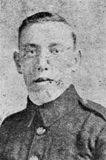
Leonard Joseph Thomas Davenport, Lance Corporal, 10428, South Wales Borderers. Leonard was born at Mountain Ash on 31 March 1891, the son of Joseph and Jane Davenport. His mother died in 1901 and his father had moved, together with his two brothers, to 6, Upton Street, Penygraig by 1911. Prior to the outbreak of war, the family was living at New Road, Howey, where their eldest sister was living with her husband. Leonard was by now serving in the army, being overseas with the 2nd Battalion, South Wales Borderers. He took part in the battalions’ assault against the German held garrison of Tsingtao following the outbreak of war, then returned to Britain with the battalion, where it joined 87 Brigade, 29th Division before taking part in the Gallipoli landings on 25 April 1915. The division was evacuated from Gallipoli in January 1916 and moved to Egypt before embarking for Marseilles and entraining for the Somme sector. Leonard took part in the divisions assault on Y-Ravine during the opening of the Battle of the Somme on 1 July 1916. He survived the divisions ordeals on the Somme, but was wounded within days of the divisions move to the Ypres sector in the summer of 1917. He died of his wounds at Ypres on 4 July 1917, aged 25, and is buried in Bard Cottage Cemetery, Belgium. His two brothers also fell.
David Davies, Private, 27729, Border Regiment. David was the son of John and Tryphena Davies, of 3, New Row, Howey. He enlisted at Llandrindod Wells into the 1st Battalion, Herefordshire Regiment, but was then transferred to the 3rd Battalion, King’s Shropshire Light Infantry. David was posted to France in 1916, and joined the 11th (Lonsdale) Battalion, Border Regiment, which was attached to 97 Brigade, 37th Division. The division saw heavy fighting on the Somme in 1916, and wintered there before moving to the Arras sector in March 1917. David was taken prisoner prior to the Battle of Arras, possibly on 18 February 1917. He died of general debility whilst in captivity, on 21 May 1917, aged 34. David is buried in Valenciennes (St. Roch) Communal Cemetery, France. He is also commemorated on the Howey Wells War Memorial.
John Morgan Davies, Private, 38513, Royal Welsh Fusiliers. John was the son of Ann Davies, of 4, Brookland Cottage, Cefnllys. He married Margaret Ann Evans at Holy Trinity Church Cefnllys on 30 April 1913 and the couple moved to Bargoed, where John had found work as a Collier. He enlisted at Bargoed into the 16th (Cardiff City) Battalion, Welsh Regiment on 25 February 1915 and was posted to Colwyn Bay to train with the battalion. The 16th Welsh embarked for France with the 38th (Welsh) Division on 2 February 1915, but John remained in Britain, transferring to the 2nd (Garrison) Battalion, Royal Welsh Fusiliers. He embarked with the battalion at Devonport on 6 March 1916 for service in Alexandria. After four months in Egypt, he was posted to the BEF in France, embarking at Alexandria on 12 July 1916 and upon arrival in France joined the 10th Battalion, Royal Welsh Fusiliers. The battalion was attached to 76 Brigade, 3rd Division and was on the Somme at the time John arrived and had taken part in terrible fighting in Delville Wood. John joined up with the battalion in tents at Mericourt l’Abbe. On 14 August the battalion marched out of camp to Talus Bois and on 16 August 1916 took over the line at Casement and Dublin Trenches. John was unfortunately one of three men killed when the 10th RWF took over their new positions that day. He was 38 years old and is commemorated on the Thiepval Memorial, France. He is also commemorated on the Llanyre and Rhayader war memorials.
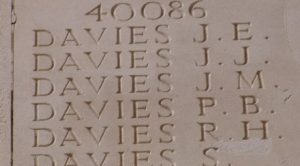
Thomas Davies, Private, G/40115, Middlesex Regiment. Thomas was the son of Charles and Mary Davies, of Penbryn Farm, Cribyn. He had worked as a bank clerk for the London and Provincial Bank at Llandrindod Wells for nine years, and had been living at Templefield, Llandrindod Wells, before transferring to the Builth Wells branch just prior to the war. Thomas enlisted into the Bankers Battalion, Royal Fusiliers at Builth Wells on 23 March 1916. On 16 August 1916 Thomas embarked for France, and on 31 August 1916 was transferred to the 12th Battalion, Middlesex Regiment, which was attached to 54 Brigade, 18th (Eastern) Division. The Division was on the Somme, after having taken part in the Battle of Albert. The Division then fought at the Battle of Bazentin, where they captured Trônes Wood, and moved on to the Battle of Delville Wood. The Division then took part in the Battle of the Ancre Heights, capturing Schwaben Redoubt, and helped capture Regina Trench. On 25 October the 12th Middlesex moved back into the front line north of Courcelette, relieving the 7th Bedford’s in Regina Trench. Thomas was sent out with a bombing party on 27 October 1916, when he was badly wounded. He managed to walk back to his own lines, but collapsed, and was evacuated via No 12 Canadian Field Ambulance to No 11 Casualty Clearing Station where he died that same day. Thomas was 27 years old, and is buried at Varennes Military Cemetery, France.
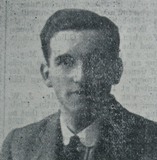
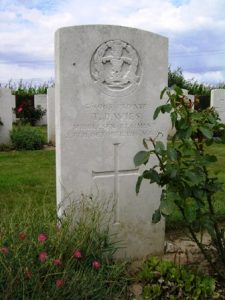
James Dedman, Private, 53890, Cheshire Regiment. James was born in Streatham, London in 1900, the son of Fred and Jane Dedman. His father died soon after his birth, so James was sent to Muller’s Orphanage, in Bristol. He was placed at Windsor House, Temple Street, Llandrindod Wells prior to the war where he had gained an apprenticeship as a painter. He enlisted into the 53rd (Young Soldier’s) Battalion, Cheshire Regiment at Brecon on 8 January 1918, and after completing his training, he embarked for France on 26 June 1918, joining the Infantry Base Depot. On 4 July James was posted to the 1st Battalion, Cheshire Regiment. The battalion was in reserve at La Lacque Camp, attached to 15 Brigade, 5th Division, and had returned to France in April 1918, following service with the Division on the Italian front. On 12 July the 1st Cheshire’s moved back into the front line in the Arrewage Sector, to begin a spell of routine trench rotation, before rotating into support lines at Tannay. On 1 August the battalion moved into the front line at Le Sart to begin another tour and on 14 August the Division moved, taking over positions in the Halloy Sector, in readiness for the great offensive, which was to be launched by the Allies on 21 August 1918. The Division launched its assault that day from the Bucquoy area, and advanced towards Bapaume over the coming days, supported by tanks, and worked alongside the Royal Naval Division. By the end of the first day, Achiet-le-Petit had been recaptured, and the 1st Cheshire’s then rested before their entire Brigade launched another assault on 30 August, against the Arras to Bapaume road, advancing as far as Favreuil. On 1 September the battalion advanced from Favreuil and moved into assembly positions west of Beugny, and on the following morning, 2 September 1918, attacked the village. James was posted as missing, believed killed in action during the days fighting. The 19-year-old has no known grave, and is commemorated on the Vis-en-Artois Memorial, Haucourt, France.
Cecil John Edwards, Private, 66869, Machine Gun Corps. Cecil was the son of John and Elizabeth Ann Edwards, of Wellington Villa Llandrindod Wells. He enlisted at Llandrindod Wells into the King’s Shropshire Light Infantry, and after completing his training, was transferred to the 219th Company, Machine Gun Corps. The Company had embarked for France at Southampton on 16 March 1917, and disembarked at Le Havre that afternoon. After several days in a rest camp, on 23 March the Company entrained to La Flacque, and marched to Hallencourt the following day, and then moved to Nesle, joining the 32nd Division. By now the Germans had begun their strategic withdrawal to the Hindenburg Line, and the 32nd Division was one of the Divisions which followed the withdrawal. By 3 April the Division had reached Savy, and by the end of the month the 219th MGC had gone back into reserve for further training in more recently developed tactics, such as firing machine-gun barrages. On 1 June 1917 the Division began to move away from the Somme sector, entraining at Villers-Bretonneux for Steenbecque, before marching to Neuf-Berquin, where the 219th MGC was tasked with anti-aircraft duties, defending supply dumps. On 14 June the Division moved again, entraining for Godewaersvelde, and then to Couderkerque, before taking up positions along the Flanders coast, relieving a French Division at Nieuwpoort. Cecil was killed here on 8 July 1917, when his dugout was hit by a German artillery shell, killing him and Lance Corporal Pollard, MM. The 20-year-old Cecil was buried in Ramscappelle Road Military Cemetery, Belgium.
Ernest Llewellyn James Evans, Private, 355128, Royal Welsh Fusiliers. Ernest was born at Llanfair, Shropshire, in 1896, the son of Evan and Elizabeth Evans. His father was a Blacksmith, and by 1901 the family was living at the Smith’s Shop, Llanddewy, near Knighton, but by 1911 had moved to 1, Norton Villa, Llandrindod Wells. Ernest worked as a carter prior to the war. He enlisted into the Montgomeryshire Yeomanry at Llandrindod Wells on 22 January 1914, and attended that year’s annual TA summer camp. When the Yeomanry were mobilised following the outbreak of war, the Montgomery Yeomanry joined the other regiments of the South Wales Mounted Brigade in Norfolk. The Yeomanry were sent to Egypt in 1916, and Ernest embarked with the Montgomery Yeomanry at Devonport on 4 March 1916. On 20 March the South Wales Mounted Brigade joined with the Welsh Border Mounted Brigade to form the 4th Dismounted Brigade, in the Western Frontier Force. The Yeomanry then played a role in fighting against the Senussi tribesmen, and guarding the Suez Canal over the coming months. On 4 March 1917 the Montgomery Yeomanry merged with the Welsh Horse Yeomanry at Helmia, forming the 25th (Montgomery & Welsh Horse Yeomanry) Battalion, Royal Welsh Fusiliers, in 231 Brigade, 74th (Yeomanry) Division, and took part in the Third Battle of Gaza on 6 November 1917, before playing an important role in the capture of Jerusalem and the subsequent advance north, driving the Turks out of Palestine. Due to the terrible casualties suffered by the British on the Western Front in March and April 1918 the 74th Division was transferred to the Western Front, and arrived at Marseilles during May 1918. The Division took over a section of the line in Flanders, before being moved to the Somme, and took part in heavy fighting during the drive towards the Hindenburg Line before being moved back to Flanders, and fought in the final advance in Artois. Ernest survived the war, but by the end of December 1918 had taken ill and was hospitalised at the 2nd Australian Casualty Clearing Station, where he died of Uraemia on 2 January 1919, aged 23. Ernest is buried in Tournai Communal Cemetery Allied Extension, Belgium.
Fred Evans. Fred cannot presently be identified, but a 16-year-old postman named Fred Evans resided at Wellington Villa, Llandrindod Wells in 1911, and enlisted in December 1915.
Thomas Farr, Private, 55208, Royal Welsh Fusiliers. Thomas was born in Radnorshire in 1886. He married Sarah Lucy Allen, of Ivy House, Welshpool, early in 1915, whilst based there with the Montgomeryshire Yeomanry, and she gave birth to their only child, Thomas Allen Farr, on 5 December 1915. Thomas did not embark for Egypt with the Montgomery Yeomanry in 1916, but was instead transferred to the 2nd Battalion, Royal Welsh Fusiliers. The battalion was on the Western Front attached to 19 Brigade, 33rd Division, and had seen heavy fighting during the Somme offensive during the summer of 1916. Thomas most probably joined the battalion after the cessation of the Somme offensive. The 33rd Division wintered in the Somme valley, holding the Clery Sector. The Division then followed the German withdrawal to the Hindenburg Line, reaching trenches at Henin, facing the Hindenburg Line, by 15 April 1917. On 19 April the 2nd RWF took over the front line at Croisilles and on 23 April launched an assault against the mighty Hindenburg Line from the direction of Mercatel. Fierce fighting raged throughout the day, and the battalion suffered terrible casualties before being relieved the following day. Thomas had been killed during the fighting on 23 April 1917. The 31-year-old is buried in Heninel-Croisilles Road Cemetery, France.
Patrick Fitzgerald, Private, 22144, Devonshire Regiment. Patrick was born in Waterford, Ireland on 28 December 1874, the son of Thomas and Mary Ellen Fitzgerald. The family had moved to Tavistock, Devon by 1891. Patrick had worked for the Great Western Railway as a Boy Clerk at Tavistock prior to enlisting into the 1st Battalion, Devonshire Regiment as a young man, and had served in India and South Africa during the Boer War. Upon leaving the army he was placed on the Army Reserve and became a postman in Llandrindod Wells on 8 September 1913, where he began playing football for Llandrindod FC. Following the outbreak of war, Patrick re-enlisted at Llandrindod Wells into his old regiment, and was mobilised on 10 January 1916. He was posted out to France, joining the 1st Battalion, Devonshire Regiment, which was attached to 95 Brigade, 5th Division. March 1916 saw the Division moving to positions between St. Laurent-Blangy and Vimy, near Arras, and the Division remained there until being transferred to the Somme, in time to take part in the attacks on High Wood. The Division remained on the Somme for the coming months, until 5 October 1916, when it was moved to the Festubert sector to rebuild following heavy casualties. The Division next saw action at the Battle of Arras, fighting at the Battle of Vimy in April 1917, and the attack on La Coulette. On 3 May the Division fought in the Third Battle of the Scarpe, and captured Oppy Wood. Patrick must have been wounded near Oppy Wood. He died of his wounds on 21 May 1917, aged 41, and is buried in Bois-Guillaume Communal Cemetery, France.
Percy Benjamin Galliers, Private, 51672, Cheshire Regiment. Percy was the son of Benjamin and Emily Galliers of Felton, Herefordshire. He had moved to The Hillyer, Llandrindod Wells prior to the war, and worked as a shop manager in the town. Percy married Dora Hannah Maria Bill, of Worcester, on 5 May 1915. He enlisted at Llandrindod into the King’s Shropshire Light Infantry on 6 December 1915, and was placed on the Army Reserve. Percy was mobilised on 31 May 1917 and joined the 3rd Battalion, King’s Shropshire Light Infantry at Pembroke Dock. Percy embarked for France at Southampton on 19 October 1917, and disembarked at Rouen four days later, joining the 4th Infantry Base Depot. On 25 October Percy was transferred to the 16th Battalion, Cheshire Regiment, which was attached to 105 Brigade, 35th Division, and had just moved into the Ypres Salient before suffering heavy casualties during an assault near the Houthulst Forest on 22 October. Percy joined up with the battalion at camp in Elverdinghe. On 24 November the battalion went back into the line at Poelcapelle, taking part in the latter stages of the Passchendaele offensive, which saw the ridge finally captured. The battalion spent the Christmas period in camp at Poperinghe, before going back into the line in January and in February 1918 the battalion was disbanded. Percy was among a number of men posted to the 12th Entrenching Battalion, but was then posted to the 7th Battalion, Queen’s Own (Royal West Kent Regiment), which was attached to 53 Brigade, 18th (Eastern) Division. On 4 April 1918 the battalion was in the line at Gentelles, when it was hit by a surprise German Trench Mortar barrage which was followed up by an infantry assault. Percy was among a number of men taken prisoner during the day, and was transported to Limberg POW Camp in Germany. Sadly, he became ill just before the Armistice and was taken to Altdamm POW Hospital, where he died of influenza and pneumonia on 13 November 1918, aged 35. Percy is buried in Berlin South-Western Cemetery, Germany.
Arthur George Gough, Private, 41726, The Loyal North Lancashire Regiment. Arthur was born on 7 March 1899, the son of Richard Philip and Elizabeth Hannah Gough of Stoneleigh, Llandrindod Wells. He worked as a good clerk for the London and North Western Railway at Llandrindod prior to enlisting at Knighton into the Training Reserve Battalion in May 1917, and was posted to Kinmel Park for training. After completing his training, he embarked for France, and was posted to the 2/4th Battalion, Loyal North Lancashire Regiment, which was attached to 170 Brigade, 57th Division. He probably joined the battalion in rest camp at The Laundries, Erquinghem in January 1918. The Division was holding the Wez Macquart sector, north-west of Lille, and its infantry battalions were carrying out the usual routine of trench rotation, which usually consisted of four days in the line, four in support and four in reserve, interspersed with supplying working parties and carrying out trench raids. By 1 March the Division had begun moving to Pont de Nieppe and by the beginning of April had transferred to the Bienvillers area, luckily missing the carnage wrought upon the troops which took their place when the Germans launched their offensive on the Lys on 9 April. On 6 May the 57th Division took over the line at Couin, relieving the 42nd Division, and its battalions again began the usual routine of trench rotation. On 11 May Arthur’s battalion was supplying working parties at Rum Trench, Gommecourt when the Germans launched a barrage of gas shells onto their positions, gassing 23 officers and 341 other ranks. Arthur was among them. He was evacuated to the Base Hospital at Rouen, where he died of gas wounds on 20 May 1918, aged 19. He is buried in St. Sever Cemetery Extension, Rouen, France. His brother, Ernest, had been killed the previous year.
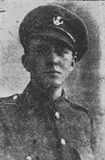
Ernest Harold Gough, Private, 27750, Border Regiment. Ernest was the son of Richard Philip and Elizabeth Hannah Gough of Stoneleigh, Llandrindod Wells. He enlisted at Llandrindod into the Herefordshire Regiment, and after completing his training, was posted to France, where he was transferred to the 11th Battalion, Border Regiment. The battalion, known as the Lonsdale’s, after its original CO, was attached to 97 Brigade, 32nd Division and was on the Somme, preparing to take part in the opening assault of the Battle of the Somme. The Battle of the Somme opened at 07.20 on 1 July 1916, by the blowing of a series of massive underground mines, and the infantry assault was launched ten minutes later. The Lonsdale’s launched their attack from Authille Wood towards Thiepval Ridge, but were met with heavy machine-gun fire, and suffered over 500 casualties. Ernest most probably joined the Lonsdale’s after their virtual annihilation on the Somme. After rebuilding, the battalion came back into the line in the Redan Ridge sector on 17 November and on the following day launched an assault on Munich Trench. The Lonsdale’s suffered heavy casualties again during the next two days, and it was most probably here that Ernest was wounded, before being captured and taken prisoner by the Germans. He died of wounds whilst a prisoner of war in Germany on 28 March 1917, aged 28. Ernest is buried in Hamburg Cemetery, Germany. His brother, Arthur, died in 1918.
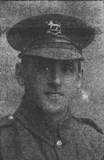
Thomas Fairgreave Gray, Private, 52288, Royal Army Medical Corps. Thomas was born at Corstophine, Edinburgh, the son of James and Elizabeth Gray. The family later resided at 15, Byrnes Road, Partick, Glasgow. He worked as a piano tuner prior to the war. Thomas enlisted into the Royal Army Medical Corps at Glasgow on 4 February 1915, and was posted to F Company, Royal Army Medical Corps. Thomas was posted to Llandrindod Wells Military Hospital for training. Thomas had only been in the army for a month when he took ill, and died of pneumonia at Llandrindod Wells Hospital on 10 March 1915, aged 22. He was buried with full military honours in Llandrindod Wells Cemetery. Thomas is not commemorated on the Llandrindod war memorial.
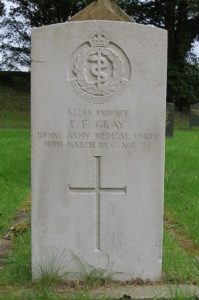
Frank Harris, Private, 31819, Royal Welsh Fusiliers. Frank was the son of Arthur and Annie Harris, of Weymouth Villa, Llandrindod Wells. He resided at Llanelli prior to the war, and enlisted at Llandrindod Wells on 29 June 1915 into the 3rd Battalion, Royal Welsh Fusiliers. Frank was posted to France on 30 September 1915, where he joined the 1st Battalion, Royal Welsh Fusiliers, which was attached to 22 Brigade, 7th Division. In the summer of 1916, the Division was on the Somme, and took part in the Battle of Albert, where it captured the village of Mametz, one of the few successes of 1 July 1916. Frank was killed that day, while acting a company runner. He was 18 years old, and is buried at Dantzig Alley British Cemetery, Mametz, France. His parents later named their house Dantzic Cottage. Frank is also commemorated at Llanelli.
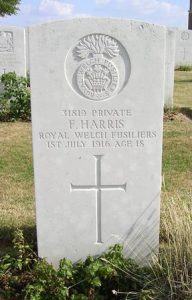
David Evan Hope, Private, 235774, Herefordshire Regiment. David was born out of wedlock at St. Harmon as David Evans, the son of Eliza Ann Evans. His mother married Aaron Hope in 1894 and the couple set up home at Abbeycwmhir, where two other sons were born. By 1901 the family had moved to Wernddu Cottage, Nantmel and a further three daughters and one other son were born, before the family moved again, to 5, Brookland Road, Llandrindod Wells. David enlisted at Hereford into the Herefordshire Regiment, and was posted to their 1/1st Battalion, which was attached to the 53rd (Welsh) Division. On 16 July 1915 he embarked at Devonport with the battalion, aboard the SS Euripides, which set course for Port Said. On the morning of 9 August 1915, the battalion landed at ‘C’ beach at Suvla Bay, Gallipoli, taking part in heavy fighting over the coming days. The battalion remained on Gallipoli until being evacuated on 12 December 1915 and moved to Egypt with the division. The division guarded the Suez Canal line for over a year, before taking part in the advance into Palestine, and saw heavy fighting during the First Battle of Gaza on 26 March 1917. David was wounded and taken prisoner during the battle and died in captivity the following day, 27 March 1917, aged 27. He has no known grave and is commemorated on the Jerusalem Memorial, Israel. David is one of three Hope brothers who fell during the war.
Edward Aaron Hope, Corporal, 148131, Machine Gun Corps. Edward was born at Abbeycwmhir in 1897, the son of Aaron and Elizabeth Ann Hope. By 1901 the family had moved to Wernddu Cottage, Nantmel and a further three daughters and one other son were born, before the family moved again, to 5, Brookland Road, Llandrindod Wells. He enlisted at Knighton into the Herefordshire Regiment but, unlike his two brothers, was posted to France, joining the 38th Battalion, Machine Gun Corps, which was attached to the 38th (Welsh) Division. He probably joined up with the division after its assault on Mametz Wood in July 1916 and possibly took part in the divisions assault on the Pilckem Ridge, during the opening of the Third Battle of Ypres, on 31 July 1917. The division wintered in the Armentieres sector, before being moved to positions north of Albert, on the Somme, at the end of March 1918, and remained there until launching their offensive across the flooded Ancre valley on 21 August 1918. Edward would have been a member of a machine-gun crew covering the river crossings, which the assaulting troops waded through during the opening of the offensive that morning. Edward was killed in action on the following day, 22 August 1918, whilst more troops were crossing the Ancre. He was 21 years old and is buried in Varennes Military Cemetery, France. Edward is one of three Hope brothers who fell during the war.
John Hope, Private, 236726, Herefordshire Regiment. John was born in Abbeycwmhir in 1894, the son of Aaron and Elizabeth Ann Hope. By 1901 the family had moved to Wernddu Cottage, Nantmel and a further three daughters and one other son were born, before the family moved again, to 5, Brookland Road, Llandrindod Wells. He enlisted at Llandrindod Wells into the Herefordshire Regiment, and was posted to their 1/1st Battalion, which was attached to the 53rd (Welsh) Division. On 16 July 1915 he embarked at Devonport with the battalion, aboard the SS Euripides, which set course for Port Said. On the morning of 9 August 1915, the battalion landed at ‘C’ beach at Suvla Bay, Gallipoli, taking part in heavy fighting over the coming days. The battalion remained on Gallipoli until being evacuated on 12 December 1915 and moved to Egypt with the division. The division guarded the Suez Canal line for over a year, before taking part in the advance into Palestine. John took ill and died in hospital at Kantara on 7 March 1917, aged 22. He is buried in Kantara War Memorial Cemetery, Egypt. John is one of three Hope brothers who fell during the war.
Ernest Hurst, Private, 84027, Machine Gun Corps. Ernest was the son of John and Mary Anne Hurst, of Ravenscourt, Park Crescent, Llandrindod Wells. He worked as a plumber and gas fitter prior to the war. Ernest enlisted into the Machine Gun Corps at Llandrindod Wells on 26 November 1916. After completing his training, he embarked at Folkestone for France on 10 April 1917, and disembarked at Boulogne later that day, before joining the Base Depot at Camiers. On 23 April 1917 Ernest was posted to the 86th Company, Machine Gun Corps, which was at Arras attached to the 29th Division. The Division had taken part in heavy fighting at Monchy Le Preux during the previous days, and was still in action. On 25 April the 86th MGC was relieved from the front line and moved back into reserve at Arras, before marching to a rest camp at Souastre, to rest and refit. The Division remained in the Arras sector over the coming weeks, seeing further fighting around Monchy during May, but on 2 June began moving out of the Arras sector, the 86th MGC entraining for St. Hilaire on 2 June where the Company remained for two weeks before beginning to move towards the Ypres Salient with the Division, which relieved the 38th (Welsh) Division in the front line at Boesinghe, to allow the latter to train for the forthcoming Third Battle of Ypres. When the 38th Division moved back into the line, the 29th Division went into reserve for three weeks. The Division then went into action during the Battle of Langemarck on 16 August, and over the coming weeks took part in the Battles of the Menin Road, Polygon Wood and Broodeseinde. On 9 October 1917 the Battle of Poelcapelle was launched, and the 86th MGC was in action, supporting the Divisions assault on Poelcapelle. Ernest was among nine men of his Company killed during the days fighting, some 1,000 yards north-west of Langemarck. The 25-year-old has no known grave and is commemorated on the Tyne Cot Memorial, Belgium.
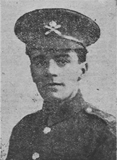
Edward Daines Hutt, Corporal, 355286, Royal Welsh Fusiliers. Edward was born in Llandudno in 1888, the son of Percy John Hutt and Agnes Hutt (nee Daines). By 1901 the family had moved to Penarth House, Llandrindod Wells, and by 1911 the family was living in Clarence Villa. Edward enlisted into the Montgomeryshire Yeomanry soon after the outbreak of war and moved to Thetford, then to Buckling with the Regiment, which was attached to the South Wales Mounted Brigade. The Montgomery Yeomanry was dismounted in November 1915, becoming infantry, and on 4 March 1916 Edward embarked with the Yeomanry for Egypt, joining the EEF, and took part in operations against the Senussi. On 4 March 1917 the Montgomery Yeomanry merged with the Welsh Horse Yeomanry to form the 25th (Montgomery & Welsh Horse Yeomanry) Battalion, Royal Welsh Fusiliers, in 231 Brigade, 74th (Yeomanry) Division. The new Division then moved into Palestine, to take part in the attempt to drive the Turks out of the country, and saw its first major action during the Third Battle of Gaza. On the eve of the battle, 31 October 1917, the 74th Division pushed forward advanced posts with Lewis Guns and began to push towards the Wadi Saba. Edward was killed during this initial advance that day. The 29-year-old is buried in Beersheba War Cemetery, Israel. His brother, Henry, was killed in 1918.
Henry Daines Hutt, Lance Corporal, 20131, Royal Welsh Fusiliers. Henry was born in Llandudno in 1894, the son of Percy John Hutt and Agnes Hutt (nee Daines). By 1901 the family had moved to Penarth House, Llandrindod Wells, and by 1911 the family was living in Clarence Villa. Henry was by now working as a grocer’s assistant for his Grandfather in Llandudno. He enlisted at Llandudno into the 14th Battalion, Royal Welsh Fusiliers soon after the outbreak of war. The battalion had been raised at Llandudno by the Welsh National Executive Committee, joining 128 Brigade, 43rd (Welsh) Division and trained in North Wales before moving to Winchester in the summer of 1915, where the formation became renumbered 113 Brigade, 38th (Welsh) Division. The Division moved to France on 2 December 1915 and moved to the Nursery Sector near Fleurbaix for trench initiation alongside the Guards Division. The Division then held a sector of the line near Cuinchy before marching south to the Somme sector in June 1916 to take part in the assault on Mametz Wood. The first attack on the wood was launched on a two-battalion front on 7 July, but failed, and the Divisional Commander, Sir Ivor Philipps, was replaced before the Division attacked again on a two Brigade front on 10 July 1916. After two days of ferocious hand-to-hand fighting, the wood was cleared up to its northern edge, before the battered Division was relieved. It then took over a section of the front at Hébuterne before moving to the Ypres Salient, and taking over the Canal Bank sector at Boesinghe. The infantry battalions of the Division then began carrying out the normal pattern of rotation in the trenches, four days in the front, four in support and four in reserve, whilst also working on trench improvement, digging new trenches, and also carrying out regular patrols and trench raids. On 31 July 1917 the Division launched its famous assault on the Pilckem Ridge, capturing Iron Cross and reaching its objective of the Steenbeek, then played a supporting role in the Battle of Langemarck. The Division was transferred to the Sailly-sur-la-Lys sector in September, and remained in the area over the winter before being moved to positions north of Albert, at Bouzincourt Ridge, at the end of March 1918, relieving the battered 2nd and 47th Divisions. It held this sector, again carrying out minor operations and trench raids, over the coming months, before taking part in the great offensive of 21 August, and began its advance towards the Hindenburg Line. On 26 August 1918 the 14th RWF assaulted the ruins of Bazentin-le-Grand, taking over 100 prisoners and capturing 8 machine-guns in the process. Henry was killed during the attack that day. The 24-year-old is buried in Caterpillar Valley Cemetery, Longueval, France. His brother, Edward, had been killed a year earlier.
Frederick Victor Gilbert Jamison, Private, 21285, Canadian Infantry. Frederick was born at Belfast on 20 June 1887, the son of William and Orcilla Jamison. His father died in 1892, and his mother moved with Frederick to live with her Uncle at Builth Wells. Frederick lived at Hazlehurst, Llandrindod Wells and had played football for Llandrindod FC prior to emigrating to Canada in 1913 and found work as a teamster at Winnipeg. Frederick enlisted into the 11th Battalion, Canadian Infantry at Valcartier on 24 September 1914 and embarked for England with the battalion. Upon arrival, the Canadians moved to Shorncliffe Camp. On 2 May 1915 Frederick was transferred to the 4th Battalion, Canadian Infantry, which was on the Western Front attached to the 1st Canadian Brigade, 1st Canadian Division. He joined the battalion at Bailleul, just before the battalion moved into reserve trenches at Festubert. Frederick saw his first major action soon after, at the Battle of Festubert, from 15-25 May. The Canadians then took part in the Second Action of Givenchy from 15 to 16 June, before moving to Ploegsteert. Over the coming months the Canadians carried out the usual routine of trench rotation, with the infantry battalions spending four days in the front line, four in support, then four in reserve, interspersed with providing working parties, and carrying out trench raids. In June 1916 the Canadians fought a desperate defensive action during the Battle of Mount Sorrel, following a German assault on Hill 62 and Mount Sorrel. The Canadians then moved to the Somme sector in September 1916, relieving the Australians at Pozieres, to continue the assault on Mouquet Farm. On 17 September Frederick’s battalion moved into the front line in front of Courcelette. Frederick was a Lewis Gunner in the battalion, and on 19 September 1916, while the battalion was preparing to launch an attack, the Germans hit them, entering the Canadian front line. Frederick’s Lewis Gun jammed, but he valiantly fired at the advancing Germans with his pistol until being shot dead, along with his gun crew. The 29-year-old has no known grave and is commemorated on the Vimy Memorial, France.
Arnold Wesley Jones, Gunner, RMA/1910S, Royal Marine Artillery. Arnold was born on 21 October 1890, the son of Martha Jones, of 16 Tower Street, Ludlow, Salop. He lived in Llandrindod Wells prior to the war, where he worked as a boot salesman. Arnold enlisted into the Royal Marine Artillery at Bristol on 4 March 1916. He embarked for France on 31 October 1916, joining the Howitzer Brigade, Royal Marine Artillery, and was posted to No 5 Howitzer. Arnold probably joined the Howitzer crew in time to take part in the Battle of the Somme. The Howitzer then moved to the Arras sector, and took part in the Battle of Arras the following spring, before moving to the Messines sector, providing artillery support during the Battle of Messines Ridge. The Howitzer was then moved to the Flanders Coast, to provide artillery support at Nieuport and Dixmude. Arnold was killed near Steenkerke on 9 November 1917. The 27-year-old is buried in Steenkerke British Cemetery, Belgium.
Arthur Jones, Private, 19855, King’s Shropshire Light Infantry. Arthur was the son of George and Elizabeth Jones, of Grantsfield, Kimbolton, Leominster. He moved to Llandrindod Wells prior to the war, to work as a boot and shoe repairer for Ross and Son, at Temple Street. Arthur enlisted at Llandrindod into the 7th Battalion, King’s Shropshire Light Infantry soon after the outbreak of war. The battalion embarked for France on 28 September 1915, attached to 76 Brigade, 25th Division, but two weeks later, 76 Brigade transferred to the 3rd Division, in the Ypres Salient. Arthur did not embark with the battalion at the time, but joined among a number of reinforcements early in 1916. The 3rd Division was holding a sector of the line near Hill 60, which included a feature known as The Bluff. During February and March 1916, a series of fierce actions took place for the Bluff, which afforded a height advantage over the battlefield to the force holding it. The 3rd Division suffered heavy casualties during this period, and then suffered more during the ensuing Actions of the St. Eloi Craters, when the British and Germans fought for control of a series of six craters which had been formed by the blowing of underground mines. The 3rd Division moved south afterwards, to take part in the Somme offensive, the 7th KSLI reaching Carnoy by 7 July. The Division took part in its first major action on the Somme a week later, when it attacked Bazentin Ridge. The 7th KSLI suffered terrible casualties during the assault, with almost 500 officers and men killed or wounded. The battalion went back into reserve at Montauban and then to Méaulte to rebuild, before moving back into the line to support an assault by the 10th RWF on Maltzhorn Farm on 18 August 1916. Arthur was killed in action during the day. The 23-year-old has no known grave and is commemorated on the Thiepval Memorial, France.
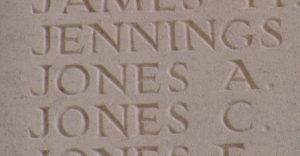
David Jones, Private, 40980, Hertfordshire Regiment. David was born on 7 April 1880, the son of Jonathan and Elizabeth Jones, of Church Cottage, Nantmel. He worked as a coachman at the Pump House Hotel, Llandrindod Wells prior to the war. David enlisted at Llandrindod into the Herefordshire Regiment, and after completing his training was posted to France, initially joining the King’s (Liverpool Regiment). He was then transferred to the Labour Corps, before being transferred again to the 1st Battalion, Hertfordshire Regiment. The battalion was by then attached to 118 Brigade, 39th Division. He probably joined the battalion after its efforts on the Somme in the summer of 1916. The Division remained on the Somme over the winter before moving to the Ypres Salient. The battalion spent the first half of 1917 holding the line near Ypres, and on the opening day, 31 July 1917, 39th Division mounted an advance towards Pilckem Ridge. The 1st Hertfordshire’s took part in a later offensive over the Steenbeek towards the Langemarck Line, but suffered such heavy casualties it was pulled out of the line, and used to supply working parties for the remainder of the Third Battle of Ypres. On 5 October 1917, David was on one such working party to the south of the city, and was walking back with some of his comrades after completing their work when the group came under shellfire, and David was killed. The 37-year-old is buried in Belgian Battery Corner Cemetery, Ypres, Belgium.
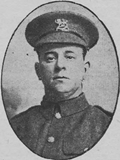
Evan Deiniol Owen Jones, Private, 49593, Lincolnshire Regiment. Evan was the son of Evan and Margaret Jones, of Trecregin Farm, Llangrannog. He worked at Lloyd’s Bank at Llandrindod Wells prior to the war. Evan enlisted at Knighton into the Army Service Corps, and was posted to France late in 1917, joining the 4th Battalion, Lincolnshire Regiment. The battalion was attached to 177 Brigade, 59th (2nd North Midland) Division, which landed in France in February 1917. The Division took part in the German Retreat to the Hindenburg Line in March 1917, and moved to Ypres later that year. Here, they fought at the Battle of the Menin Road and the Battle of Polygon Wood, during the Third Battle of Ypres. In November the Division moved south, and took part in the Battle of Cambrai. It was still in the area by March 1918 when the Germans launched their Offensive on the Somme, and the Division was caught up in the desperate fighting at the Battle of St Quentin, and the First Battle of Bapaume. The Division was then moved to Flanders to rebuild, but a fresh German Offensive was launched here during April 1918. Evan was killed in action in Flanders on 15 April 1918. He has no known grave, and is commemorated on the Ploegsteert Memorial, Belgium.
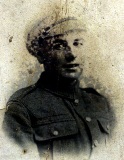
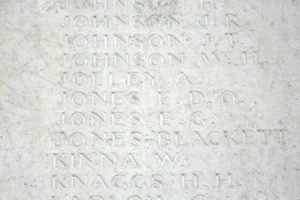
Nairn Pelham Jones, Sergeant, 37581, Royal Army Medical Corps. Nairn was the son of Albert George and Fanny Jones of 23, High Street, Clun, Shropshire. He was educated at Bourne College, Birmingham before becoming an apprentice to W. W. Johnson, Chemist, at Llandrindod Wells prior to the war, and he played football for Llandrindod Wells FC. Nairn enlisted at Shrewsbury into the Royal Army Medical Corps and after completing his training was posted to the 58th Field Ambulance, Royal Army Medical Corps, which was attached to the 19th (Western) Division. Nairn embarked for France with the Division on 19 July 1915, and the Division moved to the Givenchy sector for trench initiation. The Division took part in a diversionary attack during the opening day of the Battle of Loos on 25 September 1915, suffering heavy losses for no gain. The following year the Division moved to the Somme, where it took part in the second wave of the attack on Ovillers-La Boiselle on 1 July, capturing the village at heavy cost. The 58th Field Ambulance had moved to Laviéville, west of Amiens, a week later, and took over Field Ambulance buildings there, and over the coming days began admitting sick and wounded from the 19th Division. On 26 July 1916 Nairn was with a stretcher-bearer party moving into the front line to collect casualties from the Advanced Dressing Station. He was about to enter the ADS, an old German First Aid Post, when a German shell crashed nearby, and he was struck in the head by shrapnel, killing him instantly. Nairn was buried in Flatiron Copse Cemetery, Mametz, France. He was a man very highly thought of by his comrades. His CO wrote: ‘It is with extreme regret that I have to write this letter to inform you of your son’s death in action. He was, frankly, my favourite in the unit, not only mine, but a favourite with everyone – a thoroughly good chap. He volunteered to go up to the AD station. He knew the risks, but he was a brave man…’
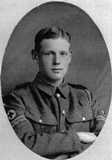
William Jones, Private, 3609, Welsh Regiment. William was the son of John William Jones and Mary Ann Jones, of Brynmawr Villa, Llandrindod Wells. He had enlisted into the 6th Battalion, Welsh Regiment, but must have been found unfit for overseas service, and was transferred to the 12th Battalion, Labour Corps. William survived the war but died at Chester War Hospital on 5 February 1919, aged 47. His remains were brought home for burial in Llandrindod Wells Cemetery. William is not commemorated on the Llandrindod war memorial.
John Ernest Jordan, Private, 27796, Royal Warwickshire Regiment. John was born at Knighton in 1883, the son of William and Elizabeth Jordan. The family then moved to Rairlawn, Tremont Road, Llandrindod Wells by 1911. John worked as a bricklayer prior to marrying Minnie Emily Adie in 1912 and the couple made their home at Yew Tree Cottage, Keniley, Knighton. He enlisted at Knighton into the King’s Shropshire Light Infantry after the outbreak of war and was posted to France in 1916, joining the 11th Battalion, Royal Warwickshire Regiment. The battalion was attached to 112 Brigade, 37th Division on the Somme and saw heavy fighting throughout the Somme offensive that year. The battalion spent much of November training at Doullens, before moving back into the line via White City on 14 November 1916, when it attacked Munich and Frankfurt trenches. Three days later the battalion moved into billets at Mailly-Maillet for a brief rest before taking up the line again on 18 November. On 21 November 1916 the battalion found itself in the front line under a heavy German artillery barrage all day. John was killed by this shellfire during the day. The 24-year-old is buried in Serre Road Cemetery, No. 1, France. John is not commemorated on the Llandrindod Wells war memorial.
John James Langford, Private, 19856, King’s Shropshire Light Infantry. John was the son of John and Elizabeth Langford, of 2, Denham Terrace, Llandrindod Wells. He served an apprenticeship as a vest maker prior to the war. John enlisted at Llandrindod Wells into the 6th Battalion, King’s Shropshire Light Infantry soon after the outbreak of war. The battalion was formed at Shrewsbury before joining 60 Brigade, 20th (Light) Division at Aldershot, then moved to Larkhill, Salisbury Plain before landing in France on 22 July 1915. The Division moved to the Fleurbaix Sector for trench familiarisation and training. When the Battle of Loos was launched on 25 September 1915 the Division fought a diversionary attack towards Fromelles. Later that year it moved north, and fought at the Battle of Mount Sorrel alongside the Canadian Corps. The Division then moved south to the Somme on 25 July, in order to take part in the great Somme offensive and on 29 July relieved the 38th (Welsh) Division in the line at Hébuterne. The ground was still littered with the dead from the 1 July fighting and the Division spent most of its first days on the Somme removing and burying bodies. During August the Division moved slightly south, taking over the line which ran from the Guillemont-Montauban road just west of Guillemont to a point just south of the south east corner of Delville Wood and began to prepare to launch an offensive here. Conditions were terrible, with constant artillery fire and poor weather making preparation for the attack difficult, so it was postponed several times. John was wounded by shell-fire during this period, and was evacuated to the Casualty Clearing Station at Heilly, where he died of his wounds on 31 August 1916, aged 24. He is buried in Heilly Station Cemetery, Mericourt-L’Abbe, France.
David Evan Lewis, Private, 21404, King’s Shropshire Light Infantry. David was the son of Evan and Ann Lewis, of Red House, Penybont Station. He was a carpenter, and married Selena Price in 1907. The couple lived at Mills Cottage, Penybont Station, where their two children were born, before moving to 1, Boundary Terrace, Llandrindod Wells. David enlisted at Llandrindod Wells into the 6th Battalion, King’s Shropshire Light Infantry soon after the outbreak of war. The battalion was formed at Shrewsbury before joining 60 Brigade, 20th (Light) Division at Aldershot, then moved to Larkhill, Salisbury Plain before landing in France on 22 July 1915. The Division moved to the Fleurbaix Sector for trench familiarisation and training. When the Battle of Loos was launched on 25 September 1915 the Division fought a diversionary attack towards Fromelles. Later that year it moved north, and fought at the Battle of Mount Sorrel alongside the Canadian Corps. The Division then moved south to the Somme on 25 July, in order to take part in the great Somme offensive and on 29 July relieved the 38th (Welsh) Division in the line at Hébuterne. The ground was still littered with the dead from the 1 July fighting and the Division spent most of its first days on the Somme removing and burying bodies. During August the Division moved slightly south, taking over the line which ran from the Guillemont-Montauban road just west of Guillemont to a point just south of the south east corner of Delville Wood and began to prepare to launch an offensive here. Conditions were terrible, with constant artillery fire and poor weather making preparation for the attack difficult, so it was postponed several times and the attack did not take place until September. The Division then saw heavy fighting during the Battle of Flers-Courcelette, then at the ensuing Battles of Morval and Le Transloy, before wintering on the Somme. When the Germans withdrew to the Hindenburg Line in February 1917 the Division was among those that followed up their withdrawal. David was killed in action near Morval on 3 March 1917. The 34-year-old has no known grave and is commemorated on the Thiepval Memorial, France. He is not commemorated on the Llandrindod Wells war memorial, but at nearby Penybont.
Lewis Davies Lewis, Sergeant, 345765, Labour Corps. Lewis was born at Llandrindod Wells in 1883, the son of Thomas Lewis. He was raised by his Uncle, Lewis Davies, at Pengarrig, Llandrindod Wells. Lewis had moved to South Wales to work as a colliery timberman, and married Margaret Mary Rees on 4 March 1905. The couple lived at 28, High Street, Pontlottyn, where their two children were born. Lewis enlisted into the South Wales Borderers soon after the outbreak of war, and embarked for France on 6 September 1915. At some time afterwards he was transferred to the Chinese Labour Corps, and probably ran working parties behind the lines. Lewis was discharged from the army on 17 March 1919 and returned home, but the war had affected his mental health, and he began suffering from depression. Lewis died at Glamorgan Hospital, Bridgend on 10 February 1922, aged 39. Nothing further is known of him, as he is not commemorated by the CWGC. Lewis is not commemorated on the Llandrindod Wells war memorial.
Archibald Thurston Thomas Lindsay, Lieutenant, Royal Monmouthshire Royal Engineers. Archibald was born on 17 June 1897, the son of Lieutenant Colonel Henry Edzell Morgan Lindsay and Ellen Katherine Lindsay (nee Thomas), of Ystrad Fawr, Ystradmynach, and of Pencerrig, Cwmbach. He was educated at Wellington College before being commissioned into his fathers’ regiment, the Royal Monmouthshire Royal Engineers in 1914 and was posted to France with the 7th Army Troops Company, Royal Monmouthshire Royal Engineers on 26 October 1915. He served on the Western Front with the unit for over two years before being killed by a sniper near Hébuterne, on the Somme, on 26 March 1918, aged 20. Archibald is buried in Foncquevillers Military Cemetery, France. His two brothers also fell during the war.
Claud Frederic Thomas Lindsay, MiD, Captain, Royal Field Artillery. Claud was born on 20 January 1892, the son of Lieutenant Colonel Henry Edzell Morgan Lindsay and Ellen Katherine Lindsay (nee Thomas), of Ystrad Fawr, Ystradmynach, and of Pencerrig, Cwmbach. He was educated at Wellington College before being commissioned into the Royal Artillery in 1912. He landed in France with the 120th Battery, 27th Brigade, Royal Field Artillery on 18 August 1914 and would have taken part in the Battle of Mons and the subsequent retreat to the Marne, before moving to Ypres with the BEF. In 1915 he returned home for a short spell of leave and married Dorothy Lindsay Forde, before returning to France. By the start of 1918 he had been promoted Captain and Mentioned in Despatches and was on the Somme attached to the 33rd Battery, Royal Field Artillery. His battery saw heavy fighting following the German Spring Offensive which was launched on 21 March 1918 and took part in the fighting withdrawal which followed. Claud was killed in action at the head of his battery near Domart on 31 March 1918, aged 26. He is buried in Hailles Communal Cemetery, France. His two brothers also fell during the war.
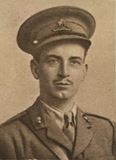
George Walter Thomas Lindsay, Captain, Royal Flying Corps. George was born on 29 January 1891, the son of Lieutenant Colonel Henry Edzell Morgan Lindsay and Ellen Katherine Lindsay (nee Thomas), of Ystrad Fawr, Ystradmynach, and of Pencerrig, Cwmbach. He was educated at Wellington College before being commissioned into the Royal Artillery in 1912. He embarked for France in August 1914 and had been wounded by a sniper at Ypres later in the year, before returning to duty. George then volunteered to serve with the Royal Flying Corps and was posted to 62 Squadron, RFC after training as a pilot. On 26 June 1917 George was flying a Royal Aircraft Factory B.E.2d., Serial 5816, from Filton, when the aircraft lost control and spun into the ground from 3,000 feet, killing George and his Air Mechanic, Airman Charles Edward Sharman. A witness reported that he thought a longeron on the front of the tail plane had failed. George was 26 years old when he was killed that day and was buried in the family vault at Holy Trinity Churchyard, Ystrad Mynach.
Allan Lloyd, MM, Lance Corporal, 31068, Royal Welsh Fusiliers. Allan was the son of Edward and Elizabeth Lloyd, of Clunbury, Shropshire. He worked as a Stoker at Llandrindod Gas Works prior to the war, and lived with his wife Alice at 2, Norton Villa, Waterloo Road, Llandrindod Wells. Allan enlisted at Llandrindod Wells into the Royal Army Medical Corps on 20 May 1915, but three days later transferred to the 3rd Battalion, Royal Welsh Fusiliers, and was posted to Litherland Camp for training. On 11 October 1915 Allan embarked at Southampton for France aboard the SS Princess Victoria, and after disembarking joined No 4 Infantry Base Depot at Rouen. Three days later he joined the 2nd Battalion, Royal Welsh Fusiliers, which was in billets at Annezin, attached to 19 Brigade, 2nd Division, which was holding the line in the Cuinchy sector. A month later 19 Brigade transferred to the newly arrived 33rd Division, and joined the battalion in the line near Cuinchy. This was a notorious sector, with much underground mining by both sides, but nonetheless the infantry battalions began their normal routine of trench rotation over the coming months. On 22 June 1916, during one routine tour in the front line at Givenchy, the Germans blew a massive mine beneath the positions held by B Company, 2nd RWF, killing some 54 men. The crater was afterwards named Red Dragon Crater in honour of the battalion. The following month the 33rd Division moved south to the Somme, and took part in Battle of Bazentin Ridge and the terrible fighting for High Wood. The 33rd Division wintered in the Somme valley, holding the Clery Sector. The Division then followed the German withdrawal to the Hindenburg Line, reaching trenches at Henin, facing the Hindenburg Line, by 15 April 1917. On 19 April the 2nd RWF took over the front line at Croisilles and on 23 April launched an assault against the mighty Hindenburg Line from the direction of Mercatel, in Tunnel Trench. Fierce fighting raged throughout the day, and the battalion suffered terrible casualties before being relieved the following day. Allan was awarded the Military Medal for his gallantry at Tunnel Trench. By 1 August the Division had moved to the Bray Dunes, to prepare for a potential assault along the coast, but when the Passchendaele offensive became bogged down, the Division was transferred to Ypres, to take part in the offensive there. On 25 September the 2nd RWF moved into the trenches facing Polygon Wood, and on the following morning, 26 September 1917, launched an assault against the wood, passing the northern edge of the recently captured Glencorse Wood. Allan was killed in action during the assault that day, during an action which saw the 2nd RWF suffer heavily. The 29-year-old has no known grave and is commemorated on the Tyne Cot Memorial, Belgium. His brother Edward also fell.
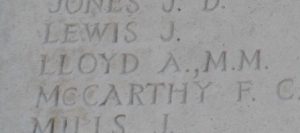
Charles Lloyd, Private, 2331, Montgomeryshire Yeomanry. Charles was the son of Edward and Rose Lloyd, of Ross-on-Wye. He worked as a Groom at Aldershot some years prior to the war, and married Sarah Effie Ryman there on 4 July 1910. By 1913 Charles had gained a position as Groom for Major Gibson-Watt, and the couple had moved to 1, Wyvern Terrace, Llandrindod Wells. Charles enlisted into the Montgomeryshire Yeomanry soon after the outbreak of war. The regiment was part of South Wales Mounted Brigade, and moved to Norfolk after the outbreak of war, to guard the coast against a potential German invasion. Charles became ill whilst in Norfolk, and was treated in Norwich Hospital, before returning home to Llandrindod Wells in August 1915. He died at his home of tubercular meningitis on 13 September 1915, aged 29. His remains were taken to his native home for burial in Newbridge-on-Wye four days later. Charles is not commemorated by the CWGC.
Edward Lloyd, Driver, 219597, Royal Engineers. Edward was the son of Edward and Elizabeth Lloyd, of Clunbury, Shropshire. He had come to Llandrindod Wells to work as a bath attendant, and married Mary Ann Price on 11 June 1907. The couple set up home at 8, Brickfield Cottage, Llandrindod Wells. Edward enlisted at Llandrindod into the Monmouthshire Regiment on 9 December 1915, and was placed on the Army Reserve. He was mobilised on 2 June 1916 and sent to Pontypool, but after just 40 days in the colours was discharged as medically unfit, after being diagnosed as suffering from chronic rheumatism. Undeterred, Edward re-enlisted into the Royal Engineers on 1 June 1917 and was posted to D Company, Royal Engineers at Aldershot. He had only been at Aldershot for a month when he fell ill, and was taken to Connaught Military Hospital, Aldershot, where he died of Addison’s disease on 28 July 1917, aged 32. His remains were brought home for burial in Llandrindod Wells Cemetery. His brother Allan also fell.
Robert Lloyd. Robert cannot presently be identified.
William James Lloyd, Private, 235961, Herefordshire Regiment. William was the son of James and Elizabeth Lloyd, of Hill View, Howey. He lived and worked as a plumber at Hafod, Swansea prior to the war and returned to Llandrindod Wells to enlist into the 1st Battalion, Herefordshire Regiment. The battalion had served at Gallipoli with the 53rd (Welsh) Division, before being evacuated to Egypt on 12 December 1915. It then served with the division in Egypt, before taking part in the offensive into Palestine in 1917. William was taken prisoner by the Turks in Palestine, during one of the Battles of Gaza. He died of disease whilst a prisoner in Mesopotamia on 27 August 1917, aged 28, and is buried in Baghdad (North Gate) War Cemetery. His war gratuity was awarded to the mother of his illegitimate child, Christiana Francis, of Hafod, Swansea.
Herbert Charles Lockyer, Gunner, 850, Royal Garrison Artillery. Herbert was born at Newbury, Berkshire in 1885, the son of Humphrey and Dorcas Lockyer. His father died in 1892, and his mother continued to raise the family at Newbury until moving to Wynberg, Dyffryn Road, Llandrindod Wells at some time after 1911. Herbert had worked in a bookshop prior to the move, and became manager of Wyman’s bookstall in Llandrindod Wells. Herbert enlisted into the Royal Garrison Artillery in March 1916, and was placed on the Army Reserve. He married Florence Emily Page at Hungerford just weeks before being mobilised, and was posted to Portland for training, joining the newly raised 177th Siege Battery, Royal Garrison Artillery. He embarked with the battery for France, which moved to positions on the Somme, near Bienvillers. On 10 October 1916 the German artillery launched an artillery barrage upon the battery’s positions, and one 5.9” shell exploded in billets occupied by some of the battery’s gunners, killing one man and wounding eleven others. The 177th Siege Battery fired a retaliatory barrage at 12.30 the following day, before sending a party of men to the billets to salvage some stores and rations. Five men of the party were killed when a German shell exploded amongst them, while another man was badly wounded. Herbert was among those killed, after having volunteered for the work. The 31-year-old was buried alongside his comrades in Bienvillers Military Cemetery, France.
David Joseph Mills, Private, M2/174967, Royal Army Service Corps. David was the son of William and Hannah Mills, of Clewedog Cottage, Penybont Station. He worked as a gardener prior to enlisting at Llandrindod into the Army Service Corps and was posted to East Africa with the 648th Motor Transport Company, Army Service Corps. The British had a force in East Africa which had been built up to combat the guerrilla warfare employed by German led troops in the area. David became ill and died of disease in Tanzania on 19 November 1917, aged 32. He is buried in Dar Es Salaam War Cemetery, Tanzania. David is also commemorated on the Nantmel and Rhayader war memorials.
Walter Lewis Morgan, Rifleman, B/201345, London Regiment. Walter was born in Howey in 1895, the illegitimate son of Elizabeth Gertrude Morgan. He was raised by his grandparents at Pencarreg Cottage, Llandrindod Wells. By 1911 his mother had married George Reynolds, and the entire family had moved to 2, Aberaman Gardens, Aberaman, where Walter became a boiler maker. He enlisted at Aberdare into the Royal Army Service Corps, and trained as a Driver with the Motor Transport Section, before being transferred to the 2/10th Battalion, London Regiment. The battalion had formed in London, attached to 175 Brigade, 58th (London) Division, and had spent the early years of the war on home service, before the Division moved to France during February 1917. The Division followed the German Retreat to the Hindenburg Line in March, then took part in the Flanking Operations around Bullecourt. Later that year the Division moved north to Ypres, and took part in the Battle of the Menin Road, the Battle of Polygon Wood and the Second Battle of Passchendaele. In March 1918 the Division was positioned at Chauny, near St. Quentin, and faced the German Spring Offensive of 21 March, taking part in a fighting withdrawal towards Villers Bretonneux over the coming days. On 8 August 1918 the Allies pressed an attack towards Villers Bretonneux, as part of the Battle of Amiens, and the Division took part in heavy fighting near Chipilly, where the Divisional Memorial now stands. Later in the month the 58th Division also took part in the Battle of Albert which helped turn the war. The Allies were now on the offensive, and the Division fought at the Battle of Bapaume, and then at the Battle of Épehy, as part of the Battles of the Hindenburg Line. By 20 September, Walter’s battalion had taken up positions along the railway embankment east of Épehy, and at dawn the following day, 21 September 1918, launched their assault on the German trench system at Dados Lane and Dados Loop. Walter was killed in action during the fighting that day. The 23-year-old has no known grave and is commemorated on the Vis-en-Artois Memorial, Haucourt, France. Walter is not commemorated on the Llandrindod Wells war memorial.
Percy Edward Muscott, Private, 291207, Suffolk Regiment. Percy was the son of Sarah Ann Muscott, of Lower Telpyn, Llanbadarn Fawr. He had moved to 2, Boundary Terrace, Llandrindod Wells and worked as a Clerk after leaving school. Percy married Norah Kate Mullany at Manchester on 17 October 1908, and the couple set up home at 1, Boundary Terrace, Llandrindod Wells, where their three daughters were born. Percy enlisted into the Herefordshire Regiment at Llandrindod Wells in October 1916. After completing his training, Percy was posted to France and was transferred to the 7th Battalion, Suffolk Regiment, which was attached to 35 Brigade, 12th (Eastern) Division. Percy probably joined the battalion early in 1917, before it took part in the Battle of Arras, where the Division helped capture Roeux. The Division remained at Arras until taking part in the Battle of Cambrai in November 1917. It was relieved at the beginning of December, and moved to positions near Albert to rest. The Division relieved the 38th (Welsh) Division in the Fleurbaix front line in February 1918, and on 22 March orders were received warning the Division of an imminent move, as the Germans had launched a massive assault on the previous day, along the section of front running from Croisilles to La Fère. Two days later the Division, less its artillery, concentrated in the Busnes area and moved that night by motor lorry to Albert. Percy’s battalion took over defensive positions to cover the approaches to the east and south-east of Albert on 26 March, and during the afternoon Germans were spotted on a hill overlooking the Albert to Bouzincourt road. The battalion moved to cover the Bouzincourt to Millencourt sector that evening and during the night the Germans launched the first attacks on their positions there. Very heavy fighting continued throughout the night, and into the following day, 27 March. Percy was killed in action during this fighting on 27 March 1918, during the desperate defence of Albert. During two days of fighting the battalion had suffered the loss of 244 officers and men. The 30-year-old Percy has no known grave and is commemorated on the Pozieres Memorial, France.
Gilbert Joshua Ward Oliver, Private, G/40061, Middlesex Regiment. Gilbert was the son of William Oliver and Martha Louise Oliver (nee Hughes), of The Limes, Llandrindod. He worked as a Bank Clerk at the London City and Midland Bank in Mold and then at Shrewsbury prior to the war. He enlisted at Abington into the Banker’s Battalion, Royal Fusiliers, but after completing his training was posted to the 12th Battalion, Middlesex Regiment, which was attached to 54 Brigade, 18th Division. The Division had landed in Boulogne on 25 May 1915, and moved to the Somme sector. The Division didn’t see its first major action until 1 July 1916, the opening day of the Battle of the Somme, when it took part in the Battle of Albert, launching an assault from Carnoy. The Division then fought at the Battle of Bazentin Ridge, where it captured Trônes Wood on 15 July, and on 17 July the Division was relieved, moving to the Ebblinghem area in Flanders to rest and rebuild. The Division then began moving back into the Somme sector, and by 24 September was east of Bouzincourt, preparing for an offensive towards Thiepval. Orders for the attack were distributed on the following day, then at dawn on 26 September 1916 the Division launched its assault on Thiepval from the direction of Aveluy Wood. Gilbert was killed during the fighting for the ruined village of Thiepval that day. The 24-year-old has no known grave and is commemorated on the Thiepval Memorial, France. His brother, William, was killed in 1918, while three others also served.
William Claude Oliver, Lance Corporal, 12818, King’s Shropshire Light Infantry. William was the son of William Oliver and Martha Louise Oliver (nee Hughes), of The Limes, Llandrindod. He enlisted at Llandrindod Wells into the 8th Battalion, King’s Shropshire Light Infantry soon after the outbreak of war. The battalion had formed at Shrewsbury, joining 66 Brigade, 22nd Division at Seaford. In December the battalion moved to billets in Eastbourne, then in March 1915 moved to Seaford. During May 1915 the Division moved to Aldershot, and on 5 September 1915 landed in France. Little over a month later the Division entrained for Marseilles, upon being transferred to Salonika, to aid the Greek Army following the combined Austrian and Bulgarian invasion of Serbia, which had pushed the Serbian army back over the Greek border. The 22nd Division was to remain in Salonika for the remainder of the war, after taking part in the Retreat from Serbia during December 1915. Between 10 to 18 August 1916 the Division fought at the battle of Horseshoe Hill, then between 13 to 14 September 1916 at the battle of Machukovo. Between 24-25 April and 8-9 May 1917, the Division fought at the battle of Doiran, and then on 18 September 1918 took part in the Second Battle of Doiran. William was posted as missing, believed killed in action, during the Second Battle of Doiran, on 18 September 1918. The body of the 25-year-old was later recovered from the battlefield and he is buried in Doiran Military Cemetery, Salonika. His brother, Gilbert, was killed in 1916, whilst three other brothers also served.
David Charles Owen, Private, 11079, South Wales Borderers. David was the son of David Henry and Mary Ann Owen of 2, Railway Cottages, Tremont Road, Llandrindod Wells. He enlisted at Brecon into the 1st Battalion, South Wales Borderers prior to the war, and embarked for France with the battalion on 13 August 1914. The battalion was attached to 3 Brigade, 1st Division and moved with the Division to the area around Mons. The Division had been one of the first to arrive in France, fighting at the Battle of Mons, and taking part in the retreat to the Marne, where the German drive towards Paris was stopped. The Division then fought at the Aisne, and at Chivy Ridge, before being moved north to Ypres, taking over positions east of the city, on the Menin Road. Here the Division was hard hit during the First Battle of Ypres, where it played an important role in stopping the German drive towards the Channel ports, before wintering in Flanders. The following spring saw the Division in action again at the Battle of Aubers Ridge. The battle was launched on 9 May 1915, in conjunction with a French assault in the Artois. The 1st SWB had been practising for the attack at Hingette and on 7 May had moved back into the battle area, at Chocques. On 8 May the battalion moved into position, advancing past Windy Corner to Rue du Bois, and at 05.40 on the following day, 9 May 1915, the 1st Division launched its assault on Aubers Ridge. Unfortunately, the British artillery barrage had proved inadequate, and the German defences were still intact, and the attacking battalions of the 1st Division were met with heavy machine-gun fire which made it impossible to reach the German front line. David was killed in action during the futile assault that day. The 19-year-old has no known grave and is commemorated on the Le Touret Memorial, Richebourg-L’avoue, France.
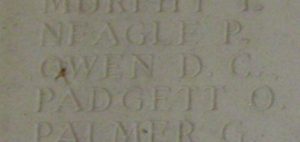
Richard Harold Page, Private, 8226, Herefordshire Regiment. Richard was born on 10 August 1895, the son of John and Matilda Page of Rhayader. Following the death of his mother in 1904, Richard went to live with his grandparents, Richard and Eleanor Breeze, at Bryncoed, Llandrindod Wells, while his father moved to 42, Aberdare Road, Abercynon, where he worked as a Baker and Confectioner. Richard enlisted at Rhayader into the 1/1st Battalion, Herefordshire Regiment soon after the outbreak of war. The battalion mobilised for war at The Barracks, Hereford, as part of the Welsh Border Brigade, Welsh Division and moved to its war station at Pembroke Dock. On 10 August the battalion moved to Oswestry, before joining the Welsh Division at Bedford in May 1915. The Division was then numbered the 53rd (Welsh) Division. On 19 July 1915 the entire Division sailed from Devonport for Imbros and on 9 August 1915 landed at Suvla Bay. The infantry moved off the beaches into the bush, but due to a lack of maps and no knowledge of the terrain, many of the units became disorientated, and the situation became chaotic. The situation settled down over the coming days, but was still precarious, with the Division coming under almost constant artillery and sniper fire. Richard was killed by a sniper at Suvla on 19 August 1915, aged 19. He is buried in Azmak Cemetery, Suvla, Gallipoli. Richard was a very popular man in the battalion, known as the ‘Wag’ of his Company, who was reported to be always cheerful and smiling, his death was felt keenly by his comrades.
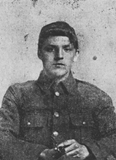
Thomas Parrott, Private, 4406, Gloucestershire Regiment. Thomas was the son of Thomas and Annie Parrott of 5, Cotswold Gardens, Tewkesbury. He worked for grocer Thomas Skyrme before the war, living at 2, Glen View, Llandrindod Wells. In June 1915 Thomas and a friend Evan Jones, enlisted at Llandrindod Wells into the 1/5th Battalion, Gloucestershire Regiment. The two men joined the battalion in France early in 1916, where it was attached to 145 Brigade, 48th (South Midland) Division, in the Hébuterne sector. The infantry battalions of the Division were carrying out the usual routine of trench rotation there during the months leading up to the launching of the Battle of the Somme, on 1 July 1916. On 18 May the Division sent 145 Brigade to Beauval, to train in readiness for the forthcoming offensive, and the 5th Gloucester’s were inspected by Sir Aylmer Hunter-Weston during this spell. The Brigade was back in the line at Hébuterne by 12 June, releasing another Brigade to move back and train. The 5th Gloucester’s were in reserve when the Somme offensive opened on 1 July, but two battalions of the 48th Division took part in a diversionary attack at Gommecourt, alongside the 56th and 31st Divisions. The main battle raged just to the right of the Division over the coming weeks, and on 16 July the 5th Gloucester’s was relieved by the battered 15th Welsh, part of the 38th (Welsh) Division, which relieved the 48th Division at Hébuterne following its ordeals in Mametz Wood. The 48th Division then moved south to the Bouzincourt sector, moving into captured German trenches at Ovillers-La Boiselle on 19 July, in readiness to take part in the Battle of Bazentin. On 23 July 1916 the 48th Division launched an attack here, but met with heavy resistance from the Germans. Thomas was killed in action during the fighting that day. The 28-year-old has no known grave and is commemorated on the Thiepval Memorial, France.
John Leslie Payton, Lieutenant, Royal Air Force. John was born at Harborne, Staffordshire in 1897, the fourth son of Hugh Payton and Laura Evelyn Payton (nee Taylor). His father died on 4 March 1908, and his mother lived at various addresses over the coming years, including at Trevaldwyn, Llandrindod Wells. John enlisted into the South Midland Divisional Train, Army Service Corps soon after the outbreak of war, and on 20 June 1915 was commissioned as Second Lieutenant into the 4th Wessex Brigade, Royal Field Artillery. He later volunteered to serve with the Royal Flying Corps and trained as a Pilot before being posted to 84 Squadron, RFC. On 16 August 1918 John was flying an SE5a, Serial C6496, which had formerly been used by the famous flying ace Hugh William ‘Dingbat’ Saunders, on an offensive patrol, when he was shot down over Northern France and killed. The 21-year-old has no known grave and is commemorated on the Arras Flying Services Memorial, France. His brother Ralph was killed in 1916. Neither brother is commemorated on the Llandrindod Wells war memorial.
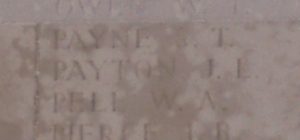
Ralph Stuart Payton, Lieutenant, Royal Warwickshire Regiment. Ralph was born at Harborne, Staffordshire on 12 March 1894, the third son of Hugh Payton and Laura Evelyn Payton (nee Taylor). His father died on 4 March 1908, and his mother lived at various addresses over the coming years, including at Trevaldwyn, Llandrindod Wells. Ralph, along with his brother Wilfred, were educated at King Edward’s School, and were close friends with a young man, JRR Tolkien. Ralph was known within the circle of Tolkien’s friends as ‘The Baby’, and he excelled at school. Ralph then entered into Christ’s College, Cambridge. Soon after the outbreak of war, he enlisted into the 14th Battalion, Royal Warwickshire Regiment, which was known as the Birmingham Pals. He was soon promoted to Sergeant, before being commissioned as Second Lieutenant, and embarked for France with the battalion on 21 November 1915. The battalion was originally attached to 95 Brigade, 32nd Division and moved to the Somme sector, but on 28 December transferred to 13 Brigade, 5th Division. On 6 March the battalion moved to the Arras sector to join the 5th Division and began the usual routine of trench rotation soon after arriving. During June the Division started training in preparation for a ‘Special Operation’, and following the opening of the Battle of the Somme on 1 July, the 5th Division began moving south, to join the offensive. On 19 July the Division moved into recently captured German trenches near Montauban, then on the following day moved into support trenches running from the south of High Wood to Longueval and Delville Wood. On 22 July the battalion received its orders for an attack by 13 Brigade and at 22.00 that night the attack was launched, in two waves, behind a rolling artillery bombardment. The advancing troops were met with withering machine-gun and rifle fire, and the 14th Warwick’s suffered 469 casualties during the assault. Ralph was among the fallen, being killed whilst leading a machine-gun crew. The 22-year-old has no known grave and is commemorated on the Thiepval Memorial, France. His brother, John, was killed in 1918. Neither brother is commemorated on the Llandrindod Wells war memorial.
Edmund Llewellyn Pedro Phillips, Private, 203652, Gloucestershire Regiment. Edmund was the son of Thomas Llewellyn and Jane Phillips of Cambrian Vaults, Newtown. He was a well-known Musician, who had served a Musical Apprenticeship at Newtown, and had been a member of the Newtown Silver Band and of the Royal Welsh Fusilier Band prior to gaining work at Newport, Mon, but just prior to the war took up a position as a junior partner in the music firm, Messrs. Tyler and Phillips, Middleton Street, Llandrindod Wells. He enlisted into the 1/5th Battalion, Gloucestershire Regiment at Hereford and was posted out to France to join the battalion following heavy losses during the Somme offensive, where it was attached to 145 Brigade, 48th (South Midland) Division. He most probably joined the battalion in March 1917, while it was following the German Retreat to the Hindenburg Line, advancing from the direction of Cappy towards Péronne, then onto Doingt and Tincourt. By the beginning of April, the Division had reached Villers Faucon, and was within striking distance of the Hindenburg Line, before assaulting Malassise Farm, near Lempire, on 5 April. A month later the Division began to move away from the area and took up positions further north, at Hermies. At the beginning of July, the Division moved into reserve and spent several weeks training before moving to Flanders on 22 July and moved to Houtkerque for further training. By 4 August the Division had reached Vlamertinghe, and on the following day marched through Ypres before taking over the line on the Steenbeek at St. Julien. Edmund, who was acting as a stretcher bearer, was killed by shrapnel in the St. Julien trenches on 16 August 1917. The 21-year-old has no known grave and is commemorated on the Tyne Cot Memorial, Belgium.
Sydney Eric Pike, Private, 36589, Royal Welsh Fusiliers. Sydney was the son of David and Mary Jane Pike, of 230, Lower Kings Road, Berkhamsted. He had moved to Llandrindod Wells prior to the war to work as a Printers Compositor, and lived at Ridgebourne Post Office. Sydney enlisted into the 3rd Battalion, Royal Welsh Fusiliers at Llandrindod Wells on 5 November 1915 and was posted to Wrexham. After completing his training, Sydney embarked for France aboard the SS Copenhagen at Southampton on 26 April 1916 and disembarked at Rouen two days later, joining No 2 Infantry Base Depot. On 7 May 1916 he joined the 2nd Battalion, Royal Welsh Fusiliers, which was in billets at Montmorency Barracks, Bethune and was attached to 19 Brigade, 33rd Division. On 16 May the battalion moved back into the front line to begin another routine tour, Sydney’s first, relieving the 2nd Worcester’s in the Auchy Right sector. On 22 June the Germans exploded a massive underground mine beneath the portion of the line held by B Company, 2nd RWF, killing over 50 men instantly, and burying a number of men of the Royal Engineers Tunnelling Companies underground. Fighting for the crater, later named the Red Dragon Crater, raged throughout the day. On 5 July the 2nd RWF retaliated by carrying out a trench raid on the Germans, capturing 39 prisoners and destroying a number of German dugouts in their front line. Soon afterwards, on 9 July, the 33rd Division began to move to the Somme sector, and by 16 July the Division had moved up to the devastated Mametz Wood, before taking over the line at Bazentin-le-Petit on 19 July, in readiness for an assault on High Wood. The 2nd RWF was in brigade reserve at Flat Iron Copse for the attack, but on the following day, 20 July, came under heavy German artillery fire whilst advancing to High Wood to take part in the attack. The 2nd RWF suffered around 240 casualties during the day, among which was Sydney, who had been struck in the right knee by shrapnel. He was evacuated to the 101st Field Ambulance before being taken to the Casualty Clearing Station at Heilly, and by 22 July had been taken to the 5th General Hospital at Rouen, from there being sent back to England. Sydney’s wound then caused septicaemia, and he died at the Salford Royal Hospital, Manchester on 5 September 1916, aged 22. Sydney’s remains were brought home for burial in St. Peter’s Church Cemetery, Berkhamsted.
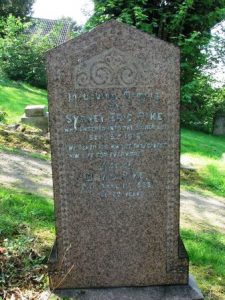
Arthur Clifford Powell, Private, 204356, Somerset Light Infantry. Arthur was born at Porthcawl in 1895, the son of William James and Clara Elizabeth Powell. His father was an Ironmonger and by 1901 the family had moved to Cliftonville, Llandrindod Wells, where he ran his own business. Arthur worked as an Ironmongers Assistant for his father prior to the war. He enlisted into the 1st Battalion, Herefordshire Regiment at Llandrindod Wells on 18 November 1915 and was posted to Hereford. Arthur was then posted to the 48th Provisional Battalion for training, before being transferred to the 4th Battalion, Monmouthshire Regiment and landed in France on 8 October 1917, joining the Infantry Base Depot. On 13 October he was transferred and posted to the 8th Battalion, Somerset Light Infantry, which was attached to 63 Brigade, 37th Division at Ypres, in the process of being relieved, and moving to Merris. After a brief rest the Division moved back into the Ypres sector, reaching Spoil Bank by 22 December, and wintered here, the battalions of the Division beginning the usual routine of trench rotation over the coming weeks. On 16 January 1918 Arthur was posted back to the Infantry Base Depot after his health had begun to break down, and he was initially diagnosed as suffering from pleurisy. He was then found to have contracted tuberculosis and returned to England for treatment at the Princess Christian Military Hospital, Englefield Green. Arthur was then discharged from the army as medically unfit, and returned home to Llandrindod Wells, where he died of tuberculosis on 24 August 1921, aged 27. He was buried in Llandrindod Wells Cemetery. His brother, William Percival Wetherley Powell, had died of tuberculosis in 1917.
John Arthur Powell, MM, Private, 55626, Royal Welsh Fusiliers. John was the son of John and Caroline Powell, of Llandegley, Radnorshire. He worked for Mr W. Watkins, at Dolau Farm, Llandrindod Wells prior to the war, where his father was the farm bailiff. John enlisted into the Montgomeryshire Yeomanry at Llandrindod Wells, and after completing his training, was posted to France early in 1917, joining the 9th Battalion, Royal Welsh Fusiliers, which was attached to 58 Brigade, 19th (Western) Division. John joined the battalion in time to take part in the Divisions assault during the Battle of Messines Ridge in June 1917. The Division saw further fighting throughout the main Passchendaele offensive, before being transferred south. The Division wintered in the Cambrai sector, following the closure of the Battle of Cambrai, and was holding a section of the line in the Flesquières Salient. On 21 March 1918 the Germans launched the first of three offensives on to the section of the front running from Flesquières to St. Quentin, and the 19th Division was thrown into desperate fighting as it was pushed back over the coming days. The battered Division was then moved to the Messines sector to rest, but on 11 April became caught up in the second phase of the German offensive, which had been launched along the Lys Valley on 9 April, and again became caught up in desperate fighting. The remnants of the Division were moved south to the Aisne sector to rest and rebuild, but by sheer bad luck, the Germans third, and last, offensive was launched here on 27 May 1918, and the Division was once more caught up in desperate fighting. John was awarded the Military Medal soon afterwards, for his bravery whilst acting as a runner for A Company near Chambrecy. On 1 July the Division moved back north, to a rest area near Ligny Les Aire, and on 7 August took over a section of the line near Chocques. The Allies launched a general offensive on 21 August 1918, and the 19th Division took part in this, reaching Cambrai by 11 October. John was wounded around this time and was evacuated to the 2nd Australian General Hospital at Wimereux, where he died of his wounds on 7 November 1918, aged 25. He is buried in Terlincthun British Cemetery, Wimille, France.
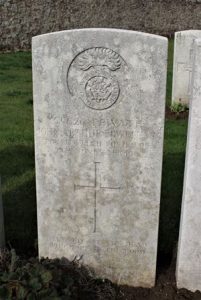
Richard Powell. Richard cannot presently be identified.
William Percival Wetherley Powell, Private, 4330, Herefordshire Regiment. William was born at Porthcawl in 1897, the son of William James and Clara Elizabeth Powell. His father was an Ironmonger and by 1901 the family had moved to Cliftonville, Llandrindod Wells, where he ran his own business. William worked as an Assistant Chemist for T.P. Davies, at Clevedon, Llandrindod Wells. He enlisted at Hereford into the 3/1st Battalion, Herefordshire Regiment on 14 February 1916 and was posted to Park Hall Camp, Oswestry. It was not long before William’s health began to break down, and he was found to have contracted tuberculosis. He was discharged from the army as medically unfit on 2 June 1916 and returned home to Llandrindod Wells, where he died of tuberculosis on 21 July 1917, aged 20. William was buried in Llandrindod Wells Cemetery. His brother, Arthur Clifford Powell, also died of tuberculosis, in 1921.
John Price, Private, 355397, Royal Welsh Fusiliers. John was the son of James and Martha Price, of Llanoley, Llandrindod Wells. He worked as a farm labourer prior to the war. John enlisted into the 3/1st Battalion, Montgomeryshire Yeomanry at Llandrindod Wells on 26 May 1915 and was posted to Welshpool to join the battalion. In July 1915 the battalion moved to Brecon and then became affiliated to 6th Reserve Cavalry Regiment at the Curragh. On 19 November 1915 John was posted to the 1/1st Battalion, Montgomery Yeomanry, which was in Norfolk attached to the South Wales Mounted Division, 1st Mounted Division. On 4 March 1916 the Division sailed from Devonport for Egypt, joining the Western Frontier Force, and took part in the campaign against the Senussi tribesmen as well as helping guard the Suez Canal. On 4 March 1917 the Montgomery Yeomanry merged with the Welsh Horse Yeomanry at Helmia, forming the 25th (Montgomery & Welsh Horse Yeomanry) Battalion, Royal Welsh Fusiliers in the newly formed 231 Brigade, 74th (Yeomanry) Division. The Division saw its first major action during the Second Battle of Gaza from 17-19 April. The battle was a failure for the EEF, and its commander was replaced by Sir Edmund Allenby, who re-organised his new command, before launching the Third Battle of Gaza, on a wider front, on 1 November 1917. John was shot in the abdomen during the advance of the 25th RWF and taken to the 35th Casualty Clearing Station where he died of his wounds that same day, on 1 November 1917, aged 40. John is buried in Beersheba War Cemetery, Israel.
Sidney Price, Private, 18813, King’s Shropshire Light Infantry. Sydney was born at Disserth in 1891, the son of Susan Price. Susan was widowed by 1901 and became a lodging house keeper at 3, Denham Terrace, Llandrindod Wells. Sidney lived at Neath prior to the war and enlisted at Hereford into the 6th Battalion, King’s Shropshire Light Infantry. He served in France with the battalion until early in 1918, and then transferred to the 10th Battalion, KSLI, which had arrived in France on 7 May 1918 with the 74th (Yeomanry) Division. The Division was fresh from service in Palestine, where it had taken part in the capture of Jerusalem, and had seen extensive service against the Turks. Upon arriving in France, it moved to the St. Hilaire sector for training, before taking over the line in the St. Floris sector on 17 August. On 21 August the 10th KSLI moved into the front line to begin its first tour in the Flanders trenches and on 22 August 231 Brigade took part in a co-ordinated operation with 61 Brigade, on its left flank. The 10th KSLI advanced with no opposition, but the Germans had lain a trap, and poured machine-gun fire onto the battalions advanced patrols, before counter-attacking and forcing the Shropshire back to their own line. Sidney was badly wounded during the attempted advance near L’Epinette on 22 August 1918, and died of his wounds that same day, aged 27. He is buried in Merville Communal Cemetery Extension, France.
Thomas Price, Wheeler, 146068, Royal Field Artillery. Thomas was the son of Josiah and Elizabeth Price, of 3, Brookland Road, Llandrindod Wells. He had moved to South Wales to find work as a Carpenter and married Elizabeth Mary Evans, of Llandovery in 1908. The couple initially lodged at the Capital and Counties Bank, Ammanford, before moving to 40, Margaret Street, Ammanford. Thomas enlisted at Ammanford into the Royal Field Artillery, and served with their 190th Brigade, which was attached to the 41st Division. This Division was formed in September 1915, and moved to France by 6 May 1916, concentrating near Steenwerck, where it began familiarisation with trench warfare in the areas of Ploegsteert and the Douve valley, south of Ypres. Within months of arriving on the Western Front, Thomas became ill and was hospitalised at No 17 Casualty Clearing Station, Lijssenthoek, where he died of nephritis on 5 December 1916, aged 32. He is buried in Lijssenthoek Military Cemetery, Belgium. His youngest son, David Peavor Price, was taken prisoner by the Japanese during the fall of Singapore in WW2.
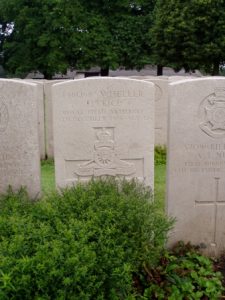
Basil Harry Raymond Prince, Private, 29802, South Wales Borderers. Basil, known as Harry, was born in Herefordshire in 1890, the son of Daniel Prince and Mary Ann Prince (nee Stokes). By 1911 the family had moved to Pales Villa, Penybont, Radnor. Harry worked in South Wales prior to the war and enlisted at Tonyrefail into the 6th Battalion, South Wales Borderers. The battalion had been in France since 25 September 1915 and was the Pioneer Battalion to the 25th Division. The Division moved to Le Bizet for trench initiation, and the 6th SWB began work around Oosthove Farm. After a short spell at Dickebusch, the Division moved to Neuville St. Vaast, and helped defend Vimy Ridge against a German attack in May 1916. The Division then moved to the Warloy area and attacked on 3 July near Thiepval. The Division fought throughout the Battle of the Somme, and then moved back to the Ploegsteert sector, where it held the line for the months leading up the Battle of Messines in June 1917. After fighting at Messines, the Division moved north, and fought at Pilckem, before moving south again, taking up positions around Bullecourt in reserve. Here the Division was used to reinforce the badly depleted British units that were hit in the area by the German Spring Offensive, which had been launched on 21 March 1918, and the 6th SWB suffered heavy casualties here before the Division was relieved and moved north to Flanders on the night of 30 March, taking up positions at Ploegsteert again, where it received reinforcements, and rebuilt. Unfortunately, on 9 April the Germans launched the second phase of their offensive here, along the Lys Valley, and the Division was caught up in the terrible fighting which followed. The 6th SWB was in the Catacombs at Ploegsteert that morning and was ordered forward, together with the 3rd Field Company, RE, to form a defensive flank for the 25th Division. The Germans then broke through at Ploegsteert village and the battalion was forced to withdraw, coming under heavy fire. Fighting raged over the coming days, as the line was pushed back by the Germans towards Neuve Eglise. The 6th SWB alone suffered 386 casualties, almost half its strength, during four days of ferocious fighting until it was relieved. According to the battalion war diary, Harry had been posted as killed in action, on 10 April 1918, at the height of the fighting. He is officially listed as being killed in action on 15 April 1918, aged 26, but the correct date is most likely 10 April. Harry has no known grave and is commemorated on the Ploegsteert Memorial, Belgium. The Llandrindod Wells war memorial names Sidney Prince, who was Harry’s brother, but Sidney survived the war and died in 1977, so it must be an error.
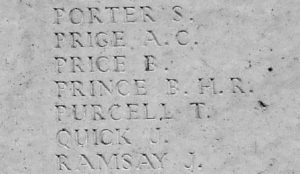
Robert Owen Pritchard, Second Lieutenant, Royal Air Force. Robert was born on 23 June 1891, the son of William and Margaret Pritchard, of Hendre Bach, Llangybi, Caernarvonshire. He became a Bank Clerk for the London City and Midland Bank after leaving school, first at Barmouth, and then at Llandrindod Wells. Robert enlisted into the Bakers Battalion, Royal Welsh Fusiliers, before being commissioned as Second Lieutenant into the 14th Battalion, Welsh Regiment, which was attached to 114 Brigade, 38th (Welsh) Division. He served in France with the 14th Welsh for almost two years before volunteering to serve with the Royal Air Force, and initially joined 83 Squadron. He failed a medical, so was not deemed fit for flying, and instead served with the Squadron HQ before being posted to the No. 1 School of Aeronautics, at Reading. Robert took ill before the end of the war, contracting influenza, and he died of severe influenza at the Reading War Hospital on 6 November 1918, aged 28. His remains were brought home for burial at Capel Helyg Chapelyard, Llangybi.
Thomas Lewis Pugh, Serjeant, 7297, Welsh Regiment. Thomas was born at Garddu, Howey, the son of John and Mary Pugh. He lived with his wife Eleanor Pugh, at Bewdley House, Llandrindod Wells prior to the war. Thomas was an army reservist and following the outbreak of war joined the 8th Battalion, Welsh Regiment. The battalion had formed in Cardiff in August 1914, before moving to Salisbury Plain as part of the 13th Division. Thomas took ill here soon after re-enlisting, and returned to a nursing home near Llandrindod Wells, where he died of tuberculosis on 4 April 1915, aged 28. He was buried with full military honours in Providence Baptist Chapelyard, Howey.
Arthur Reynolds, Private, 38139, Labour Corps. Arthur was born in Knighton in 1886, the son of George and Louisa Reynolds. Following the death of his father the family moved to Howey, then by 1911 the family had moved to 2, Swiss Villa, Tremont Road, Llandrindod Wells. Arthur worked as a Bricklayer’s Labourer prior to the war. He enlisted into the Cheshire Regiment at Llandrindod Wells on 13 December 1915 and was placed on the Army Reserve. Arthur was mobilised on 10 October 1916 and posted to the 22nd (Labour) Battalion, Cheshire Regiment. The battalion moved to France in December 1916, and in April 1917 split, becoming the 64th Company and the 65th Company, Labour Corps. Arthur was posted to the 64th Company. The 64th Company must have been caught up in the heavy fighting which followed the German offensive on the Lys from 9 April 1918, as Arthur was wounded around this time, and he died of his wounds on 29 April 1918, aged 31. He is buried in Esquelbecq Military Cemetery, France.
Fred Shopland, Able Seaman, Z/2588, Royal Naval Volunteer Reserve. Fred was born on 22 July 1895, the son of Walter and Sarah Shopland of 1, Brookland Road, Llandrindod Wells. He worked for Mr W.W. Johnson, Chemist before becoming a Brakesman prior to the war. Fred enlisted into the Royal Naval Volunteer Reserve on 24 November 1915, and was drafted to France on 21 November 1916, joining Drake Battalion, RNVR, which was attached to the 63rd (Royal Naval) Division. The Division had been formed soon after the outbreak of war, due to a surplus of Royal Naval personnel, and saw service at Ostende and Antwerp soon after the outbreak of war, before being sent to take part in the Gallipoli campaign. It had moved to France in May 1916, to join the Somme offensive. Fred had joined the battalion following heavy losses suffered during the Somme offensive, at the Battle of the Ancre and joined the battalion at St. Quentin on 25 November, where it was enjoying a brief spell out of the line. On 18 January 1917 Drake Battalion moved back into front line trenches at Hamel, in the Beaucourt Sector, to begin a routine tour. On 4 February 1917 the Royal Naval Division took part in an assault on Puisieux, and captured River Trench, before consolidating. The Germans counter-attacked soon afterwards, before launching a fearsome artillery barrage onto the newly captured lines, causing heavy casualties in the Division. Fred was killed in action during the days fighting. The 21-year-old has no known grave and is commemorated on the Thiepval Memorial, France.
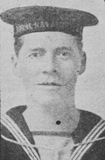
Charles Howard Smith, Private, 325302, Queen’s Own Worcestershire Hussars. Charles was born in Feckenham, Worcestershire in 1874, the son of Bryan Hinton Smith and Mary Sophia Pemberton Smith (nee Johnson). His mother died soon after his birth and his father remarried, Mary Ann Smith. His father died on 28 February 1892, and his stepmother bought Ye Wells Hotel, Llandrindod Wells. Charles worked as a Bank Clerk prior to enlisting into the Imperial Yeomanry at Kidderminster on 27 December 1899, and served in South Africa during the Boer War. Charles returned to Britain in 1902, following the end of the war, and went to live with the family at Ye Wells Hotel. He enlisted into the Queen’s Own Worcestershire Hussars (Worcester Yeomanry) following the outbreak of war. The battalion mobilised for war at Worcester, attached to the 1st South Midland Mounted Brigade, moving to Warwick before joining the 1st Mounted Division at Bury St. Edmunds. The battalion then moved to Norfolk, transferring to the 2nd Mounted Division, and helped guard the Norfolk coast against the potential threat of invasion over the coming months until embarking at Avonmouth on 11 April 1915 for Egypt. The Division spent almost four months in Egypt before landing at Suvla Bay, Gallipoli on 18 August 1915, remaining at Gallipoli until the evacuation in November 1915 when it returned to Egypt, and was broken up in January 1916, with the Worcester Yeomanry joining the 5th Mounted Brigade, which was sent to protect the eastern side of the Suez Canal. The Worcester Yeomanry had been ordered to protect a party of engineers on a well-digging expedition, when at dawn on 23 April 1916 they were attacked by a force of 3,000 Turkish troops. Initially the Turks were beaten back, but the defenders were then overwhelmed before the Turks struck their main garrison at Qatia, almost annihilating the battalion. Charles was killed in action during the heavy fighting that day, 23 April 1916. The 43-year-old has no known grave and is commemorated on the Jerusalem Memorial, Israel. His half-brother, James Clement Smith, had been killed at Ypres the previous month.
Derek Charles Freeman Smith, Private, 7720, Australian Infantry. Derek was born at Leytonstone, Essex on 21 July 1899, the son of Charles Freeman-Smith and Lydia Elizabeth Susannah Freeman-Smith (nee Tadman). He was the nephew of Frances Tysoe Smith, of Montpellier Hotel, Llandrindod Wells. In August 1906 the family emigrated to Australia, and arrived at Bunbury on 19 October 1906, before making their home at Cotswold, Goldsmith Road, Claremont, Western Australia. Charles worked as a farm hand before enlisting at Fremantle into the reinforcements for the 11th Battalion, Australian Infantry on 12 April 1917. He embarked at Fremantle aboard HMAT Borda on 29 June 1917 and disembarked at Plymouth on 25 August, before moving to the Australian Depot at Sutton Veney, Wiltshire. On 24 January 1918 Derek landed in France and proceeded to join the 11th Battalion, Australian Infantry, which was in Flanders attached to the 3rd Brigade, 1st Australian Division. Derek joined the battalion near Neuve-Eglise on 31 January, in time to see a German aircraft brought down in flames in front of the battalions’ lines. The battalion spent January at Neuve-Eglise, and saw little action until April 1918, when the Germans launched their offensive along the Lys Valley, and the 1st Australian Division helped stop the German offensive after weeks of heavy fighting, remaining in the area over the coming months. Derek was shot in the leg during an Australian counter-attack at Merris on 3 June, and was treated at the 2nd Casualty Clearing Station before re-joining the battalion three weeks later. On 19 July 1918 the 11th Battalion was in the line at Strazeele, assistant with the capture of Meteren, when Derek, in an advanced post, was shot dead by a German sniper. The 18-year-old is buried in Borre British Cemetery, France.
James Clement Smith, Second Lieutenant, Royal Fusiliers. James was born at Astwood Bank, Worcestershire, in 1882, the son of Brian Hinton Smith and Mary Ann Smith. Following the death of his father in 1892, his mother bought Ye Wells Hotel, Llandrindod Wells, and moved there with her family. James worked as an electrical engineer prior to the war. James enlisted into the 16th Battalion, Manchester Regiment soon after the outbreak of war, and was commissioned into the Royal Fusiliers in February 1915. He was posted to the 4th Battalion, Royal Fusiliers, which was attached to 9 Brigade, 3rd Division, in the Ypres Salient. James probably joined the battalion at Chateau Rosendal in February 1915, after having embarked for France on 2 February. The Division was holding a section of the line east of Ypres, near what is now Bedford House Cemetery. The Division had taken part in the famous Christmas Truce on 25 December 1914 and remained at Ypres throughout the winter. From 22 April until 25 May 1915 the Division took part in the Second Battle of Ypres, seeing action at Bellewaarde and Hooge, and took part in the Second attack on Bellewaarde on 25 September. The Division spent a second winter stationed in the Ypres Salient, now stationed in the St. Eloi Sector, and in 1916 fought at the Actions of the Bluff, and at the St Eloi Craters. On 19 March the 4th Royal Fusiliers had been relieved from a routine spell in the trenches, and whilst in reserve at Reninghelst trained in preparation for a forthcoming assault. On 26 March the battalion moved back into the front line at St. Eloi, and at 04.15 on the following morning, the Royal Engineers blew a series of underground mines beneath the German positions here, before the battalion went over the top and charged to take possession of the craters. Two lines of trenches were captured from the Germans and consolidated, whilst being defended against a series of German counter-attacks. James was killed in action during the terrible fighting that day. The 33-year-old has no known grave and is commemorated on the Ypres (Menin Gate) Memorial.
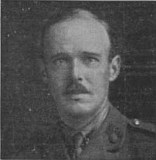
John William Sommers, Ordinary Seaman, J44808, Royal Navy. John was born at Llandrindod Wells on 22 April 1900, the son of John and Harriett Sommers. By 1903 the family was residing at 4, Mill Lane Cottage, Blackpill, Swansea, where John’s father had found work as a Colliery Banker. John enlisted into the Royal Navy on 22 April 1915, and after completing his training was posted aboard HMS Impregnable on 2 October 1915. He then spent a week back at HMS Victory, the training establishment, before his next posting, aboard the battleship HMS Prince of Wales on 8 April 1916, which was based in the Adriatic. John spent eight months aboard Prince of Wales, before being posted to HMS Vivid I, then for the remainder of the war spent time there and aboard HMS Isis, which was based at Cobh. On 19 May 1919 John was invalided out of the Royal Navy after having contracted Tuberculosis. He was sent to a Sanatorium in Neath, where he died of tuberculosis on 8 July 1919, aged 19. Nothing more is known of him, as he is not commemorated by the CWGC. John is not commemorated on the Llandrindod Wells war memorial, but is named on the Swansea Cenotaph.
George Taylor, Private, 55044, Royal Army Medical Corps. George was born on 26 December 1890, the son of George Thomas Taylor and Annie Taylor, of Fern Leigh, Atherton Road, Hindley Green, Lancashire. He worked as a Waggon Repairer prior to the war. George enlisted into the Royal Army Medical Corps at Bolton on 10 February 1915 and was posted to Aldershot before being transferred to G Company, RAMC at Llandrindod Wells, for training in the Military Hospital. George had not been at Llandrindod long before he took ill, being first diagnosed as suffering from pneumonia, and he died of meningitis in the Military Hospital on 8 March 1915, aged 24. George was buried with full military honours in Llandrindod Wells Cemetery. He is not commemorated on the Llandrindod Wells war memorial.
William Thomas Arnold Thompson, Private, 203678, Gloucestershire Regiment. William was the son of John and Harriet Thompson, of Bryn Villa, Rhayader. His father was the Registrar and Overseer for the district. William enlisted into the 1/5th Battalion, Gloucestershire Regiment at Rhayader. The battalion was attached to 145 Brigade, 48th (South Midland) Division and William probably joined the battalion following heavy losses during the Somme offensive in the summer of 1916. In March 1917 the Division followed the German Retreat to the Hindenburg Line, and later in the year fought at Third Ypres, taking part in several major engagements, during the Battle of Langemarck, the Battle of the Polygon Wood, the Battle of Broodeseinde and the Battle of Poelcapelle. The Division was ordered to Italy on 21 November 1917, where it would remain for the duration of the war. William probably did not embark for Italy, having taken ill at some time, and was invalided home. He died at Rhayader on 27 January 1918, aged 21, and was buried in St. Bride’s Churchyard, Llansantffraid-Cwmdauddwr.
William Ewart Thornhill, Second Lieutenant, East Lancashire Regiment. William was the son of Joseph and Mary Anne Thornhill, of 1, Victoria Avenue, Swansea. He worked as a commercial manager at the London branch of the Graigola-Merthyr Colliery Company prior to the war. He enlisted into the Public Schools Battalion, Royal Fusiliers soon after the outbreak of war and in May 1917 he was commissioned into the East Lancashire Regiment. William married Caroline Cook-Jenkins, of The Lansdowne, Llandrindod Wells, the niece of Sir Thomas Hughes of Cardiff, at Holy Trinity Church, Llandrindod Wells on 4 June 1917 whilst on leave prior to embarking for France, joining the 2nd Battalion, East Lancashire Regiment, which was attached to 24 Brigade, 8th Division in the Ypres Salient. The Division took part in the Battle of Pilckem Ridge on 31 July 1917, launching an assault from Bellewaarde onto the Westhoek Ridge. William’s battalion was relieved the following day, moving into reserve at Steenvoorde, then by 15 August moved back into the line on the Westhoek Ridge and took part in another offensive here the following day, suffering heavy losses before being relieved on 18 August. The Division then moved to the Ploegsteert Sector for a month, before returning to Ypres. William was killed near Hill 63 on 4 October 1917, aged 27. He has no known grave and is commemorated on the Tyne Cot Memorial, Belgium.
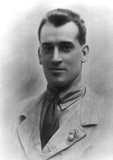
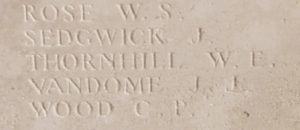
Sidney James Thornton, Private, 1727, Herefordshire Regiment. James was the son of James Thornton and Selina Thornton (nee Cole), of 11, Violet Street, Heaviley, Stockport. He was raised by his grandparents, John and Esther Thornton, at Stowe, near Knighton, before coming to Llandrindod Wells to work as a farm servant at Upper Cellws, Llanbadarn Fawr. Sidney enlisted at Hereford into the 1/1st Battalion, Herefordshire Regiment soon after the outbreak of war. The battalion mobilised for war at Hereford as part of the Welsh Border Brigade, Welsh Division, moving to its war station at Pembroke Dock. The battalion then moved to Oswestry before going to Bedford with the entire Division. On 13 May the formation became numbered, becoming 158 Brigade, 53rd (Welsh) Division and on 16 July 1915 embarked at Devonport for Gallipoli. On 9 August 1915 the Division landed at Suvla Bay, Gallipoli, and set up HQ on the west slope of Lala Baba. The infantry moved off the beaches into the bush, but due to a lack of maps and no knowledge of the terrain, many of the units became disorientated, and the situation became chaotic. The Division got caught up in desperate fighting over the coming days, before the fighting quietened down, and the normal routine of trench warfare began. Sidney was killed in action at Suvla on 20 August 1915, during a spell of heavy sniper activity. The 25-year-old has no known grave and is commemorated on the Helles Memorial, Gallipoli.
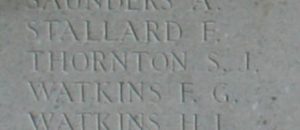
James Tunley, Private, 27825, Border Regiment. James was the son of Nathaniel and Harriet Tunley of Pentre, Llandrindod Wells. He had been a labourer prior to gaining work on the golf links at Llandrindod and then at the Robin Hood Club, Birmingham. James enlisted at Llandrindod Wells into the Herefordshire Regiment, and after completing his training was posted to France at some time in 1916, originally destined for a battalion of the King’s Shropshire Light Infantry. He was instead transferred to the 11th Battalion, Border Regiment, known as the Lonsdale’s, which was attached to 97 Brigade, 32nd Division. The Division had moved to France at the end of December 1915, and the following year took part in the opening of the Somme Offensive, and then fought at the Battle of Bazentin, the Battle of the Ancre and the resulting Operations on the Ancre. The Division remained in the sector over the winter, and in March 1917 followed the German Retreat to the Hindenburg Line, moving to the ruins of Rouvroy by 17 March. The Germans continued to withdraw over the coming days, and the 32nd Division moved forwards, passing the ruined villages of Herley and Nesle and by 30 March the Division was facing the strongly defended village of Savy. On the following night the Lonsdale’s moved into position with orders to assault the village of Savy, and at 05.00, after a tot of rum for each man, the battalion launched its assault on the village, following a rolling artillery barrage. Within 90 minutes the battalion had taken the village and began consolidating its gains. James was killed in action during the days fighting. The 31-year-old is buried in Savy British Cemetery, France.
Arthur Turner, Private, 45903, Lancashire Fusiliers. Arthur was born in Noyaddllwyd, Llanfaredd in 1899, the son of Arthur and Mary Turner. His father was from Llandrindod Wells, and Arthur spent a lot of time in the town with his grandparents before gaining work at Trefonen Farm. Arthur enlisted at Shrewsbury into the army and was posted to France in 1917, joining A Company, of the 2nd Battalion, Lancashire Fusiliers. The battalion was attached to 12 Brigade, 4th Division and had taken part in the Third Battle of Ypres before being moved to the Arras sector over the winter. On 21 March 1918 the Germans launched their offensive from the Hindenburg Line between Arras and the River Somme and, with the front line being broken, the 4th Division was moved forwards, meeting the Germans in front of Fampoux on 28 March. Heavy fighting followed over the coming days, resulting in Sir Douglas Haig noting in his despatches: ‘I doubt if any Division has killed more Germans than the 4th…’ The 4th Division was relieved from the Arras sector on 12 April and moved to Lillers, to aid the beleaguered troops which had been hit by the Germans second offensive, on the Lys Valley, which had been launched on 9 April. The 4th Division took over the line at Riez Di Vinage and held it until being relieved on 25 April 1918. Arthur was killed during the relief that day. He was 18 years old and is commemorated on the Loos Memorial, France. His parents later lived at Force Cottage, Wychnor, Burton-on-Trent.
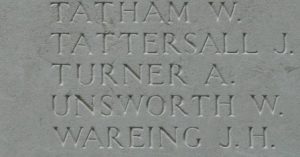
Basil Charles Gordon Vaughan, Private, 16043, Scots Guards. Basil was the son of Police Constable William Maurice Vaughan and Elizabeth Vaughan, of Clyro. Following his father’s death in 1904, the family moved to Westminster House, Grosvenor Road, Llandrindod Wells. Basil enlisted at Knighton into the Scots Guards soon after the outbreak of war, and upon completing his training, was posted to France at some time in 1916, joining the 2nd Battalion, Scots Guards, which was attached to the 3rd Guards Brigade, Guards Division. He probably joined the battalion on the Somme, where the Guards Division saw heavy fighting at the Battle of Flers-Courcelette, and then at the Battle of Morval, capturing Lesboeufs Village. The Division remained here for the winter, and in March 1917 took part in the advance caused by the German Retreat to the Hindenburg Line. Later that year the Division moved north to Ypres, and fought at the Battle of Pilckem Ridge, alongside the 38th (Welsh) Division. The Guards then saw further fighting during the Battle of the Menin Road, the Battle of Poelcapelle and the First Battle of Passchendaele, before being transferred to the Cambrai sector at the end of October, and moved into the battle area by 9 November. The Battle of Cambrai was raging when the Guards arrived in the sector, and the 2nd Battalion, Scots Guards went into action to aid the assault of the 40th (Bantam) Division on Bourlon Wood on 24 November. Basil was badly wounded during the ferocious fighting within the wood, and was evacuated to the 1st Southern General Hospital at Abbeville, where he died of his wounds on 21 December 1917, aged 19. Basil is buried in Abbeville Communal Cemetery Extension, France.
William Wagstaff, Private, 10051, 11th (Prince Albert’s Own) Hussars. William was born in Winchester in 1894, but was orphaned soon afterwards, and taken to Mullers Orphanage, Bristol. He had come to Llandrindod Wells as a young man, and became a Tailor’s Apprentice to Joseph Price, of Park Crescent, Llandrindod Wells in about 1907. William enlisted into the 11th (Prince Albert’s Own) Hussars at Brecon prior to the outbreak of war. The regiment landed in France as part of the 1st Cavalry Brigade, 1st Cavalry Division on 26 August 1914, joining the BEF. The regiment then took part in the retreat from Mons, and took part in the famous cavalry charge which led to the capture of eight guns at Néry in September 1914, alongside the 2nd Dragoon Guards. When the BEF moved north to defend Ypres, the 1st Cavalry Division was positioned at Messines Ridge, and in October 1914 a squadron from the regiment endured a heavy German bombardment that left many of its soldiers buried in a trench while another squadron from the regiment used a vantage point at the top of a building to train a machine gun on the Germans. At the Second Battle of Ypres in April 1915 the regiment, working with the Durham Light Infantry and 9th Lancers, held the village of Hooge despite being under attack from the German forces using poison gas. By May 1915 the 1st Cavalry Division was in the Railway Wood sector. At dawn on 13 October 1915 the Divisions front line trenches were bombarded by the Germans, forcing the troops in the trenches to withdraw. The Germans then attacked, in an attempt to capture the vacated trenches, so the Cavalry counter-attacked and fighting raged throughout the day. William was killed in action by a German shell as he carried ammunition to the trenches that day. The 21-year-old has no known grave and is commemorated on the Ypres (Menin Gate) Memorial, Belgium.
Walter Walls, Private, 8241, Herefordshire Regiment. Walter was born in Willesden, Middlesex on 18 June 1894, the son of Walter and Alice Walls. He worked as a Wheelwright, and by 1911 was residing at Abbey Villa, Llandrindod Wells. Walter enlisted at Llandrindod Wells into the 1/1st Battalion, Herefordshire Regiment on 26 April 1912, and had attended two annual Territorial camps in the years leading up to the war. The battalion mobilised for war at Hereford as part of the Welsh Border Brigade, Welsh Division, moving to its war station at Pembroke Dock. The battalion then moved to Oswestry before going to Bedford with the entire Division. When the Division was numbered to the 53rd (Welsh) Division, it embarked for Gallipoli. By now Walter must have been deemed as unfit for overseas service, as he remained at Bedford. He was discharged from the army as medically unfit on 14 June 1916, and returned home to Willesden. For some reason, the townspeople of Llandrindod Wells must have thought he had fallen during the war, and placed his name on the war memorial. He did, however, survive, and lived until 5 December 1980.
Arthur Sidney Weale, Private, 25603, King’s Shropshire Light Infantry. Arthur was the son of Thomas and Caroline Weale, of 1, Alma House, Llandrindod Wells. He married Caroline Marcharby Embrey in 1913 and the couple lived at Tremont Road, where their two daughters were born. Arthur enlisted at Llandrindod Wells into the King’s Shropshire Light Infantry. He was posted to France, probably in the late summer of 1916, joining the 1st Battalion, King’s Shropshire Light Infantry, which was on the Somme attached to 16 Brigade, 6th Division. The Division saw heavy fighting on the Somme, during the Battle of Flers-Courcelette, the Battle of Morval and the Battle of Le Transloy. The following year saw the Division at Arras, where it fought at the Battle of Hill 70, and later that year the Division took part in the Battle of Cambrai. In the spring of 1918, the Division was one of those hit by the German Offensive on the Somme, which had been launched on 21 March, and saw heavy fighting before being withdrawn and transferred to Flanders to rest, but the following month the Germans launched another offensive on the Lys, and the Division was caught up in terrible fighting yet again. Arthur had been wounded and taken prisoner at some time during the German offensive. His worried wife received a letter from him at some time after his capture, saying that he was alive, but sadly he succumbed to his wounds soon after, on 1 June 1918, aged 31. Arthur is buried in Braine-Le-Comte Communal Cemetery, Belgium.
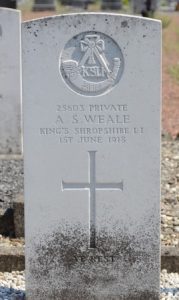
Charles Lewis Williams, Private, 12490, King’s Shropshire Light Infantry. Charles was the son of Lewis and Agnes Elizabeth Williams, of Red Lion, Llanfihangel Nantmellan, New Radnor. He enlisted at Llandrindod Wells into the King’s Shropshire Light Infantry and was posted the 6th Battalion, King’s Shropshire Light Infantry, which was attached to 60 Brigade, 20th (Light) Division. Charles embarked with the battalion for France on 24 July 1915 and upon its arrival, the entire division moved to the Fleurbaix Sector for trench familiarisation and training. When the Battle of Loos was launched on 25 September 1915 the Division fought a diversionary attack towards Fromelles. Later that year it moved north, and fought at the Battle of Mount Sorrel alongside the Canadian Corps. The division then fought through the Somme Offensive, and took part in the advance to the Hindenburg Line in March 1917. Later that year it took part in the Third Battle of Ypres, before moving south in November, to take part in the Battle of Cambrai. The division remained in the area between Cambrai and St. Quentin over the winter of 1917/18 and was attacked there by the German Spring Offensive of 21 March 1918. During the morning of 21 March 1918, the 6th KSLI was in billets at Cugny and with the situation in the front critical, moved forwards towards the Battle Zone, taking up the line from the Somme to Vaux. Charles was killed in action soon afterwards, on the night of 21 March 1918. He was 28 years old and is buried in Ham British Cemetery, Muille-Villette, France.
Evan John Worthing, Gunner, 97679, Royal Garrison Artillery. Evan was the son of Joseph and Eliza Worthing, of Cefn House, Howey. He worked as a waggoner prior to enlisting into the Royal Artillery on 10 December 1915.Evan was not mobilised until 20 June 1916 when he joined the Royal Garrison Artillery and after training was posted out to France with the 152nd Siege Battery, RGA. The battery moved to Ypres and took up positions near the Ieperlee canal, where it began work softening up the German lines in preparation for the forthcoming Third Battle of Ypres. Evan was wounded at Ypres when his gun position was hit by German gas shells. He died at the 88th Field Ambulance on 18 July 1917, aged 20, and is buried in Canada Farm Cemetery, Belgium. His brother, William, also fell.
William Worthing, Private, 17437, King’s Shropshire Light Infantry. William was the son of Joseph and Eliza Worthing, of Cefn House, Howey. He worked as a waggoner prior to enlisting at Knighton into the 5th Battalion, King’s Shropshire Light Infantry soon after the outbreak of war. The battalion was attached to 42 Brigade, 14th (Light) Division, and landed at Boulogne on 25 May 1915. The Division was to see its first action during the Action of Hooge, where it became the first to be attacked by the German use of flamethrowers. It then fought in the Second attack on Bellewaarde. The battalion had been in the line near the Menin Road throughout August, and as a diversion to the main offensive at Loos which was to take place from 25 September 1915, the 14th Division had been given the task of attacking Bellewaarde. The 5th KSLI, together with the remainder of 42 Brigade, was tasked with seizing Bellewaarde Farm. The British launched an artillery bombardment at 3.50, then at 4.20 the attacking battalions advanced behind a creeping barrage. Some of the brigade’s objectives were reached, but a German counter-attack pushed them back to their starting positions, after incurring heavy casualties. William was among 450 casualties suffered just by the 5th KSLI that day. The 23-year-old has no known grave and is commemorated on the Menin Gate Memorial, Ypres. His brother, Evan, was killed at Ypres in 1917.
World War Two, 1939-1945
Peter Ablitt, Warrant Officer, 1375027, Royal Air Force Volunteer Reserve. Peter was the son of Ernest Harry Leverson Gower Ablitt and Blodwen Ablitt, of Llwynderw, Howey. He enlisted into the Royal Air Force Volunteer Reserve and trained as a pilot before being posted to 17 Squadron, RAF. The squadron had been in France with the BEF until the evacuation and then flew Hurricanes during the Battle of Britain. On 11 November 1941, the Squadron sailed for the Far East, and was diverted to Burma following the Japanese invasion of Burma. The squadron operated Hurricanes in Burma and India before being posted to Ceylon in February 1943, where it converted to Spitfires. Peter was killed when his Hurricane crashed whilst attempting to land at Colombo on 28 September 1944. He was 26 years old and is buried in Liveramentu Cemetery, Colombo, Sri Lanka.
Vivian Newton Ashton, Sergeant, 1392315, Royal Air Force Volunteer Reserve. Vivian was born at Spalding, Lincolnshire in 1918, the son of Harold Ashton and Florence Mary Ashton. His father worked as a Bank Clerk, and served with the Royal Army Ordnance Corps throughout the Great War. After the war the family moved to Llandrindod Wells. Vivian enlisted into the Royal Air Force Volunteer Reserve under the name of Eric James Ashton, and after gaining his pilots wings was posted to No. 6 Advanced Flying Unit for further training. On 21 May 1943 Vivian took off from RAF Chipping Norton, in Gloucestershire, for a routine training flight, aboard an Airspeed Oxford II, Serial ED156 when he spun and crashed, killing himself and Leading Aircraftman I. J. Pritchard. Vivian was 24 years old when he was killed that day, and was buried in Cheltenham Cemetery, Prestbury.
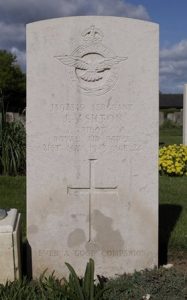
Philip Charles Knill Bennett, Sergeant, 1579492, Royal Air Force Volunteer Reserve. Philip was born on 18 June 1924, the son of William Thomas Charles Bennett and Frances Mary Bennett (nee Knill), of The Gate Farm, Llandrindod Wells. He enlisted into the Royal Air Force Volunteer Reserve and after training as a Flight Engineer was posted to 514 Squadron, RAF, which was a bomber command squadron, based at RAF Waterbeach, equipped with the Avro Lancaster. During the evening of 24 March 1944, Philip took off from Waterbeach aboard Lancaster II, Serial LL625, commanded by Flying Officer John Laing. It was the crew’s 15th operation, and they formed part of a large bomber force despatched to bomb Berlin. The mission was carried out successfully, but on the return leg the returning Lancaster’s met with a number of German night-fighters. Philip’s Lancaster appears to have been intercepted and shot down on the return leg, crashing at Wörlitz, some eight miles from Dessau, killing all bar one of her crew. Philip was 19 years old when he died in the crash, and is buried alongside his fellow crewmen in Berlin 1939-1945 War Cemetery, Germany.
Charles Thomas Botwood, Ordinary Seaman, D/JX 160107, Royal Navy. Charles was born on 19 June 1923, the son of Charles Beresford Botwood and Lilian Ellen Botwood (nee Owens), of Bath Cottage, Llandrindod Wells. He enlisted into the Royal Navy and after completing his training was posted aboard the light cruiser HMS Trinidad. She had been launched on 21 March 1941 and commissioned on 14 October 1941, joining the Home Fleet. During March 1942 Trinidad was part of an escort group for Convoy PQ 13, taking supplies to Russia through the Arctic Ocean. The Convoy was attacked by a number of German destroyers, and Trinidad damaged one, before launching a torpedo at the German destroyer to sink her. Unfortunately, the torpedo was faulty, and struck Trinidad, killing 32 men. Trinidad was towed to safety before managing to limp to safety at Murmansk. She was partially repaired in the Kola Inlet, before setting out for home on 13 May, escorted by four destroyers. On 14 May 1942 the small fleet was spotted by German aircraft and Trinidad was then attacked by a number of German Junkers 88 bombers. She was hit by one bomb, which started a serious fire, killing 63 men. Now too badly damaged, she was scuttled later that day. Charles was among those killed by the German bomb on 14 May 1942. The 18-year-old has no known grave and is commemorated on the Plymouth Naval Memorial, Devon.
John Raymond Bufton, Flying Officer, 74328, Royal Air Force Volunteer Reserve. John was born on 12 January 1914, the son of James Osborne Bufton and Florence Louise Bufton (nee Peters), of Cwm Farm, Llandrindod Wells. Prior to the war he had moved to London and was living in St. Pancras with his sister Lilian, and he was working in an aircraft factory. John followed in the footsteps of two of his brothers, and enlisted into the Royal Air Force Volunteer Reserve, training as a Pilot before being commissioned as a Pilot Officer on 26 September 1940 and posted to 49 Squadron, RAF. The Squadron had reformed in February 1936, equipped with the Hawker Hind, then moved to RAF Scampton before re-equipping with the Handley Page Hampden medium bomber. On 28 October 1940 John took off from Scampton, flying Hampden I, Serial X3027, which was part of a force of bombers sent to bomb Hamburg. John’s Hampden was intercepted by a German fighter and shot down into the sea off Skegness soon afterwards, killing all her crew of four men. John was 26 years old when he was killed in the crash. His body, as well as those of two other crewmen, were recovered by the Skegness Lifeboat, and John’s remains were brought home for burial in Llandrindod Wells Cemetery.
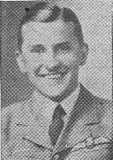
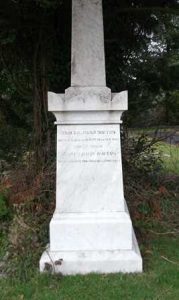
Geoffrey Powell Careless, Major, 126147, South Wales Borderers. Geoffrey was the son of Edward Powell Careless and Mabel Irene Careless (nee Thomas), of Cotswold House, Llandrindod Wells. He received an emergency commission into the South Wales Borderers on 27 March 1940 and was posted to Burma, attached to the 4th Battalion, 1st King George V’s Own Gurkha Rifles (The Malaun Regiment). The Regiment saw ferocious fighting during the Japanese invasion of Malaya, losing its entire 2nd Battalion during the fall of Singapore. Geoffrey joined the newly formed 4th Battalion in Burma, and soon became promoted to Major. The battalion took part in the Arakan Campaign in 1944, when the Allies took the offensive against the Japanese in Burma. Geoffrey was killed in Burma on 17 February 1944, aged 31. He is buried in Taukkyan War Cemetery, Myanmar.
Arnold Price Chapman, Rifleman, 6913616, Rifle Brigade. Arnold was born at Llandrindod Wells. He was a regular soldier at the outbreak of war, serving with the 2nd Battalion, Rifle Brigade. The battalion was stationed in Nablus, Palestine at the outbreak of war, attached to the 14th Infantry Brigade, 8th Infantry Division. It moved to Egypt and joined the 7th Armoured Divisions Support Group. Arnold was killed in Egypt soon after his battalion arrived, on 13 September 1940. He is buried in Halfaya Sollum War Cemetery, Egypt.
Rhys Henry Evans, Gunner, 1141841, Royal Artillery. Rhys was born on 29 July 1921, the son of Henry Evans, of Howey. He enlisted into the Royal Artillery and was posted to the Far East in January 1945 with the 96th (Royal 1st Devon Yeomanry) Field Regiment. Upon its arrival in the Far East, it supported the 81st (West Africa) Division and the 25th Indian Division in preparation for Operation Zipper, part of the operation to recapture Singapore. The Japanese surrendered before the operation was launched, following the dropping of the two atomic bombs at Hiroshima and Nagasaki, so the operation was cancelled. Rhys remained in the Far East after the war and died in Malaya on 17 January 1946, aged 24. He is buried in Ipoh (Connolly Road) Christian Cemetery.
Frank Rees Haines, Flying Officer, 133331, Royal Air Force Volunteer Reserve. Frank was the son of John Henry and Elizabeth Haines, of Cardiff. He lived at Llandrindod Wells prior to the war. Frank enlisted into the Royal Air Force Volunteer Reserve and after training as a Navigator, was commissioned as a Flying Officer on 30 November 1942 and was posted to 51 Squadron, RAF. The Squadron had re-equipped with the Handley Page Halifax in 1942, joining No. 4 Group RAF, to take part in RAF Bomber Command’s strategic bombing offensive against the Nazis, operating from RAF Snaith in East Yorkshire. On the night of 28 June 1943, Frank took off from Snaith aboard Handley Page Halifax Mk II, Serial DT513, as part of a large force despatched to bomb Cologne. During the early hours of the following morning, 29 June 1943, the Halifax was intercepted and shot down over the North Sea by a German night fighter, crashing into the icy water with the loss of all her crew of seven men. Frank was 27 years old when he died that morning, and is commemorated alongside his fellow crew-men on the Runnymede Memorial, Surrey.
Alastair Hair, Lieutenant, 131316, Royal Army Medical Corps. Alastair was born in Tillicoultry, Clackmannanshire on 20 September 1904, the son of Reverend James Hair and Catherine Hair. The family had moved to Nelson, Lancashire by 1911, but Alastair returned to Scotland to train as a Doctor at Glasgow. He then took up a position in Presteigne, but had moved to Sorrento, Llandrindod Wells by 1939, with his wife Dora Bannatyne Hair. Alastair volunteered to serve with the Royal Army Medical Corps following the outbreak of war, and was posted out to the Mediterranean. He died of wounds, possibly in Greece or Crete, on 15 April 1941, aged 37. Alastair has no known grave and is commemorated on the Athens Memorial, Greece.
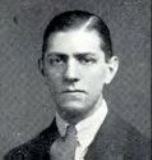
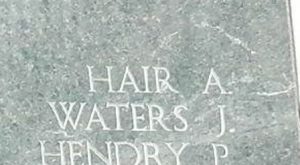
John Henry Hanne, Sergeant, 564212, Royal Air Force. John was born in Lambeth in 1913, the son of Henry Hanne and Elizabeth Hanne (nee Langford). He was living at Lynstone, Llandrindod Wells prior to the war, and married Nancy Vera Gilford in 1938. John enlisted into the Royal Air Force, and trained as a Pilot before being posted to 110 Squadron, RAF. The squadron reformed on 18 May 1937 at RAF Waddington, equipped with Hawker Hinds, before converting to the Bristol Blenheim and on 4 September 1939 took part in the first RAF raid of the war against Wilhelmshaven. The squadron then took part in anti-shipping strikes. On 10 January 1940, John took off from RAF Wattisham, flying Bristol Blenheim, Serial P4859, on a reconnaissance flight. The Blenheim was intercepted by German Me110 fighters, and was shot down into the North Sea about two hours into the flight, killing all her crew of three. John was 26 years old when he was killed that day, and is commemorated alongside his two crew on the Runnymede Memorial, Surrey.
Douglas Hayden Harper, Sergeant, 1196615, Royal Air Force Volunteer Reserve. Douglas was the son of William and Edith Harper, of the Manor Hotel, Llandrindod Wells. He enlisted into the Royal Air Force Volunteer Reserve and after completing his training was posted to 83 Squadron, RAF. The squadron had re-formed at RAF Turnhouse in Scotland on 4 August 1936, equipped with Hawker Hinds, and on 14 March 1938 joined No 5 Group at Scampton before re-equipping with Handley Page Hampdens. The Squadron initially carried out precision daylight bombing raids, but switched to night operations before re-equipping with Avro Manchester’s then Avro Lancaster’s. In August 1942, the squadron was transferred to the No 8 Group Pathfinder Force at RAF Wyton. During the night of 19 March 1943, Douglas took off from RWF Wyton aboard Lancaster I, Serial R5754, on a Pathfinding mission. The weather was poor, so just before midnight the Lancaster radioed to say it was turning back. The aircraft was never seen again, and was presumed lost on the following morning, 20 March 1943. Douglas was 32 years old when he was killed that night, and is commemorated alongside his fellow crewmen on the Runnymede Memorial, Surrey.
James Houston, Guardsman, 2695180, Scots Guards. James was the son of James and Georgina Houston, of Hamilton, Scotland. He had enlisted into the Scots Guards just after the outbreak of war. James married Olwyn Mary Davies, of Llandrindod Wells, in 1939. James served with the 1st Battalion, Scots Guards. The battalion took part in the campaign in Norway, as part of the 24th Guards Brigade in April 1940, before being evacuated back to Britain. It then embarked for North Africa on 26 February 1943 and took part in the Tunisian campaign over the coming months, before the Germans surrendered on 13 May. On 7 December the 1st Scots Guards landed at Taranto to take part in the Italian campaign. James was killed in Italy on 6 November 1944, aged 29. He is buried in Arezzo War Cemetery, Italy. He is not commemorated on the Llandrindod Wells war memorial.
Thomas Harold Matthew Instone, Sergeant, 1417346, Royal Air Force Volunteer Reserve. Thomas was the son of Harold Instone and Fanny Gertrude Instone (nee Matthews), of Llandrindod Wells. He enlisted into the Royal Air Force Volunteer Reserve, and after training as a Wireless Operator, was posted to 59 Squadron, RAF. The Squadron began the war as a reconnaissance squadron, equipped with the Bristol Blenheim, but converted an anti-shipping and ani-submarine squadron, before being re-equipped with the Consolidated Liberator from the summer of 1942 and in May 1943 moved to Northern Ireland. Just before mid-day on 17 August 1944, Thomas took off from Ballykelly aboard Liberator BZ724, on a routine anti-submarine patrol Later that evening the aircraft received orders to proceed to RAF Tain. Some seventeen hours into their flight, on the morning of 18 August 1944, the Liberator lost power in one engine while approaching Tain, and crashed into a hillside, injuring the pilot but killing all nine other crewmen. Thomas was 23 years old when he died during the crash, and is buried in Wick Cemetery, Scotland.
John Richard James, Lieutenant, 141081, Royal Engineers. John was born on 9 July 1899, the son of John and Emily James of Penarth. He married Sarah Joan Edwards, of Llandrindod Wells, in 1924. John was commissioned into the Royal Engineers, and trained as a bomb disposal expert. John was posted to London during the Blitz. On 13 December 1940, John was part of a crew sent to disarm a UXB at 590, Romford Road, Manor Park, London. The team was commanded by Captain Blaney, RE. Upon inspecting the bomb, Blaney and John came to the conclusion that they would steam out the explosives, but the lorry carrying the equipment broke down, so they decided to fit a magnetic clock-stopper so they could convey the bomb away to Wanstead. As the bomb was hoisted up it exploded, killing all of the team and a Police Superintendent who was observing the work. John’s remains were conveyed to his parent’s hometown and he was buried in Penarth Cemetery, Glamorgan.
Ernest Aelwyn Pryce Jones, Petty Officer Cook (S), D/MX 49557, Royal Navy. Ernest was born on 11 August 1913, the son of Louis Price Jones and Elizabeth Jane Jones, of Llandrindod Wells. He married Megan Davies, of Goodwick, Pembrokeshire, in 1936. Ernest was serving in the Royal Navy at the outbreak of wear and was posted aboard the aircraft carrier HMS Glorious. Converted from a large light cruiser which had seen action during the Great War, Glorious was commissioned in her new role in 1930, becoming the world’s first aircraft carrier. She served with the Mediterranean Fleet after the outbreak of war, but was recalled to the North Sea, where her aircraft took part in air strikes on German troops during the invasion of Norway in 1940. On the morning of 8 June 1940, Glorious was returning as part of a convoy of Royal Naval ships from Norway when she was discovered, along with her two escorts, the destroyers HMS Acasta and HMS Ardent, by the German battleships Scharnhorst and Gneisenau. The carrier and her escorts were sunk in two hours, after putting up a brave fight against the overwhelming power of the Germans. Ernest was 26 years old when he died that day, and he is commemorated on the Plymouth Naval Memorial, Devon.
Ralph Claude Hilton Jones, Ordinary Seaman, D/JX 556820, Royal Navy. Ralph was born on 27 September 1924, the son of Radcliffe Claude Jones and Ethel Miriam Jones (nee Williams), of Llandrindod Wells. He was educated at the University of Wales, Lampeter. Ralph then enlisted into the Royal Navy and was posted aboard the River Class frigate HMS Mourne. On 15 June 1944, Mourne was attached to the 5th Escort Group, on patrol in the English Channel assisting the Normandy Landings, when she was torpedoed and sunk by the German submarine U-767. Ralph died in the sinking that day. He was 19 years old, and is commemorated on the Plymouth Naval Memorial, Devon.
Trevor Rhys Jones, Able Seaman, D/JX639338, Royal Navy. Trevor was born on 10 September 1924, the son of John and Maud Jones, of Howey. He enlisted into the Royal Navy and was based at HMS President III, before being posted aboard the MV Derrycunihy. The ship had been selected to transport A and C squadrons of the 43rd (Wessex) Reconnaissance Regiment, which embarked on 18 June 1944 at West India Docks, London. She arrived off Sword Beach on 20 June, but could not unload due to high seas, so moved to Juno Beach. On the morning of 24 June 1944 Derrycunihy struck a mine which had been dropped by a German aircraft and split in two before sinking. The disaster was the worst loss of life off the Normandy beaches during the campaign, with 183 soldiers and 25 of the ship’s crew lost. Trevor was just 19 years old when he died that day and is commemorated on the Plymouth Naval Memorial, Devon.
Trevor James Jones, Private, 14676404, Durham Light Infantry. Trevor was born at New Cottage, Llanbister on 25 May 1925, the son of Richard Morgan Jones and Cecilia Eaton Jones (nee Marpole). The family later lived at Llandrindod Wells. Trevor enlisted into the army following the outbreak of war and was posted to the 8th Battalion, Durham Light Infantry. The battalion landed on the Normandy beaches at midday on 6 June 1944, as reserve Battalion of 151 (Durham) Brigade. The troops moved forwards from the beaches towards Meuvaines and saw little resistance. Again, the line was advanced on the following day and the 8th Durham’s took up positions along the Bayeux to Caen railway. Trevor was killed here when the battalion’s positions were attacked by Tiger tanks which machine-gunned their trenches on 11 June 1944. He was just 19 years old and is buried in Bayeux War Cemetery, France. The inscription at the base of his headstone reads: ‘DEAREST TREVOR NO MORNING DAWNS NO LIGHT RETURNS BUT WHAT WE THINK OF YOU’.
J. Kerr. This man, or woman, cannot presently be identified, but a John Miller Kerr, the son of Doctor Andrew Miller Kerr and Elizabeth Craig Kerr (nee Miller), served during World War Two, and died on 3 May 1949, aged 35.
Frederick Ernest Lewis, Flight Lieutenant, 52239, Royal Air Force. Frederick was the son of Bosley Ernest Lewis and Mabel Alice Lewis (nee Govier), of 2, Piedmont, Llandrindod Wells. He enlisted into the Royal Air Force, and after training as a pilot was granted an emergency commission as Pilot Officer on 20 July 1943. Frederick was posted to 82 Squadron, RAF, which had been reformed as a light-bomber Squadron on 14 June 1937, equipped with the Hawker Hind. The Squadron converted to the Bristol Blenheim IV in August 1938, and flew anti-shipping operations over the North Sea. The Squadron performed a ground attack role in May 1940, to protect the retreating BEF. A detachment was sent to Malta in May 1941, to take part in anti-shipping patrols in the Mediterranean, but following heavy losses the Squadron returned to Britain, before being posted to RAF Cholavarum, India in early 1942, equipped with Vengeance dive-bombers, and carried out anti-submarine patrols as well as bombing operations against Japanese targets in Burma. The squadron was re-equipped with Mosquitoes in July 1944, continuing in these operations before being withdrawn to India to prepare for the proposed invasion of Malaya. Frederick was killed in Ceylon on 12 October 1945, aged 23. He is buried in Colombo (Liveramentu) Cemetery, Sri Lanka.
Harold Gilbert Lewis, Police Constable, Birmingham City Police. Harold was born on 30 June 1915, the son of Benjamin and Sarah Lewis of Cwm Farm, Llandrindod Wells. He worked on his parent’s farm prior to the war. Harold enlisted into Birmingham City Police on 18 December 1939 and after completing his police training, took further courses in First Aid and Anti-Gas treatment. Harold lived at 85, Alston Street, Ladywood. He was on duty at Bromsgrove Street, Birmingham when he was killed during a German air raid on the city, at the height of the Birmingham Blitz, on 22 November 1940, aged 25. His remains were brought home for burial in Llandrindod Wells Cemetery. Harold is not commemorated on the Llandrindod Wells war memorial.
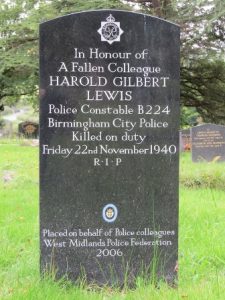
Ian Leslie Thomas Miller, MiD, Sub-Lieutenant, Royal Naval Volunteer Reserve. Ian was born in India on 1 May 1924, the son of Lieutenant Colonel William Kinchella Miller, South Wales Borderers, and Constance Isabel Miller (nee Thomas). On 1 March 1928 the family arrived back in England, after sailing from Bombay, and took up residence at Llandrindod Wells. Ian enlisted into the Royal Naval Volunteer Reserve in 1940 and became a pilot with the Fleet Air Arm. By the end of 1944 was serving aboard the aircraft carrier HMS Nairana. On 20 October 1944, Nairana sailed with Russian convoy JW 61, as part of a large escort force, which was protecting 62 merchant ships. Aboard Nairana was 835 Naval Air Squadron with 14 Swordfish IIIs and six Wildcat VIs on board for what would be their first Arctic convoy. The strength of the convoy led to it entering the Kola Inlet at Murmansk unmolested. Ian was killed on the return leg of the voyage, probably during the loss of one of 835 Squadron’s Swordfish, on 12 December 1944, aged 20. He has no known grave and is commemorated on the Lee-on-Solent Memorial, Hampshire. Ian is not commemorated on the Llandrindod Wells war memorial.
Lorraine George Mills, Gunner, 1582396, Royal Artillery. Lorraine was born on 8 June 1915, the son of Thomas Edward Mills and Emily Mills (nee Ridgley), of 12, Brookland Road, Llandrindod Wells. He worked as a Hotel Porter prior to the war. Lorraine enlisted into the Royal Artillery, and was posted to 239 Battery, 77th Heavy Anti-Aircraft Regiment, Royal Artillery, which was a Welsh TA battery. The battery had served during the Battle of Britain and the Blitz. On 6 December 1941 the regiment was among a number of units posted to the Middle East, but was diverted as news reached the British of the Japanese invasion of Malaya. The convoy reached Singapore on 13 January, but the garrison was under attack by the Japanese, so the convoy sailed to Batavia, Java. The Japanese launched air attacks on the island almost immediately the convoy arrived, before landing an invasion force on the island, and the 77th HAA Regiment was forced to surrender on 8 March 1942. Lorraine was among a large number of men sent to Thailand to work on the Thai-Burma Railway. He died there on 16 July 1943, aged 28. Lorraine was originally buried in Hintock Valley, but in September 1946 his grave was exhumed and he was re-buried in Kanchanaburi War Cemetery, Thailand.
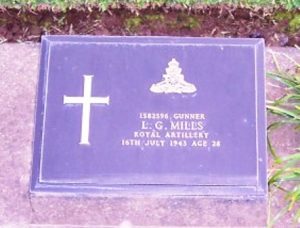
John Anthony Norton, Flying Officer, 153058, Royal Air Force Volunteer Reserve. John was the son of Tom Norton and Elsie Norton (nee Cummins), of Llandrindod Wells. He had studied for his B.Sc. prior to enlisting into the Royal Air Force Volunteer Reserve, and was posted to 196 Squadron, RAF. The Squadron was reformed at RAF Driffield, Yorkshire on 7 November 1942 as a night bomber unit in No. 4 Group, part of Bomber Command, equipped with Vickers Wellingtons. It took part in raids on enemy ports and industrial centres and flew gardening sorties. The Squadron moved to RAF Witchford on 19 July 1943, re-equipping with the Short Stirling III before moving to RAF Leicester East later that year and carried out various transport, glider-towing and supply-dropping flights, as well as undertaking SOE and SAS parachuting missions over occupied territories. On 7 January 1944, the squadron moved to RAF Tarrant Rushton, Dorset and began dropping supplied to the French Resistance. On 14 March 1944, the squadron moved to RAF Keevil, Wiltshire, and dropped paratroopers on D-Day. It was then heavily involved in Operation Market Garden and on 9 October 1944 the squadron moved again, to RAF Wethersfield, Essex. On the night of 9 November 1944 eight Stirling’s from the Squadron were deployed to drop supplies to SOE groups operation in Europe. John was one of the crew of Stirling IV, Serial EF234, which was lost without a trace during the mission. John was 22 years old, and is commemorated alongside his five fellow crewmen on the Runnymede Memorial, Surrey.
John Edward Price, Fusilier, 14505031, Royal Welch Fusiliers. John was the son of John Edward and Margaret Greta Price, of Howey. He enlisted into the 7th Battalion, Royal Welch Fusiliers. The battalion was attached to the 53rd (Welsh) Division and spent the early years of the war on home service, preparing to take part in the invasion of Europe. The Division moved to Northern Ireland in October 1939 and spent nineteen months there before returning to England in November 1941, its various units being stationed in the Welsh Border counties. In March 1942 the Division joined Southern command in Kent, where it was to remain until June 1944, preparing for D-Day. John died at Canterbury on 3 December 1943, aged 19. His remains were brought home and John was buried in St. Michael’s Churchyard, Llanfihangel-Rhidithon.
Eric Albert Duggan Rees, Captain, 240499, Royal Artillery. Eric was born in Church Stretton, the son of William John Rees and Lottie Minnie Rees (nee Duggan). His parents were living at Llandrindod Wells by 1939, and Eric married Dorothy Joyce Emmens, of Brampton, Llandrindod Wells in 1941. Eric was commissioned into the Royal Artillery and was posted to the 102nd (The Pembroke Yeomanry) Field Regiment, RA. The Regiment was a TA unit, which recruited in West Wales, and had served as infantry during the Great War. The first line 102nd Field Regiment, formed from the two Pembrokeshire Batteries, landed at Algiers in February 1943 with one of the first two self-propelled 25 pounder batteries to see action. After the fall of Tunis, they converted to medium artillery and landed in Italy in December 1943. Eric was killed in Italy on 4 December 1944, aged 29. He is buried in Forli War Cemetery, Italy.
Rufus John Roberts, Trooper, 7901910, Royal Armoured Corps. Rufus was born at Bedwellty on 15 December 1918, the son of Rufus Wilfred Roberts and Augusta May Roberts (nee Harris). His father died in 1920, and his mother re-married Evan Jenkins Prethero, before the family moved to Llandrindod Wells. Rufus worked as a colliery labourer at Myniddislwyn prior to the war. He enlisted into the 3rd King’s Own Hussars, an armoured unit, and was posted to B Squadron. After the fall of France, the 3rd The King’s Own Hussars was shipped to North Africa and assigned to the 7th Armoured Brigade and served in the North African Campaign. In 1941, B Squadron was sent to Singapore as reinforcements, but with the fall of Singapore, it was diverted to Java where, after a brief fight, it was ordered to surrender. Rufus was taken prisoner by the Japanese when his unit surrendered and was taken to Japan, and incarcerated at Onoda POW Camp, where the prisoners were put to work in a local coal mine. Rufus died of beriberi on 27 October 1943, aged 25. He is buried in Yokohama War Cemetery, Japan. Rufus is not commemorated on the Llandrindod Wells war memorial.
Richard Atheling Sanders, Pilot Officer, 41872, Royal Air Force. Richard was born at Leicester on 16 April 1920, the son of James William Sanders and Mary Olivia Sanders (nee Sutton). His father was a Policeman, and the family emigrated to Australia in April 1922, after he had taken up a position of Police Constable in Sydney. The family returned to England prior to the war, and moved to Llandrindod Wells. Richard learned to fly at the Norfolk and Norwich Aero Club, gaining his pilots license flying a Gipsy Moth on 2 September 1938. Richard enlisted into the Royal Air Force and was posted as a Pilot Officer with 81 Squadron on 23 October 1939. In May 1940, while the BEF was withdrawing to the Channel, Richard flew a Hawker Hurricane of 145 Squadron, from RAF Tangmere, Sussex, to Lille-Marcq Aerodrome, near Lille, France. He remained with the Squadron at Merville, and on 20 May 1940 took off from Merville in Hurricane I, Serial N2710, on a combat patrol. At some time afterwards Richard came into contact with a flight of Messerschmidt Bf-110’s and was shot down near Arras, wounded. He was evacuated from Dunkirk to England aboard the Hospital Ship Worthing and died of his wounds aboard ship on 23 May 1940, aged 20. Richard is buried in Shorncliffe Military Cemetery, Kent. Richard is not commemorated on the Llandrindod Wells war memorial.
Douglas Gordon Smith, Able Seaman, P/JX 265534, Royal Navy. Douglas was born at Hackney on 27 December 1911, the son of Charles Gordon Smith and of Lizzie Margaret Smith (nee Yates). He married Edith Elaine Fraser in 1939, and she came to live at Llandrindod Wells. Douglas enlisted into the Royal Navy, and served aboard the Hunt-class destroyer HMS Berkeley. Sher had been commissioned on 6 June 1940 and had soon afterwards took part in Operation Ariel, the evacuation of the remnants of the British Expeditionary Force from ports in western France. She took part in several operation over the next two years, being damaged by a mine in December 1940, and after repairs went back on operations. In July 1942 Berkeley was selected to be part of the force sent to raid the French port of Dieppe, Operation Jubilee. The landing force hit the Dieppe beaches on 19 August 1942. Berkeley was supporting the landings when she was attacked by German Focke-Wulf Fw 190s, which dropped two bombs on her, breaking her keel and killing 13 ratings, and the badly damaged ship was then scuttled. Douglas was 30 years old when he was killed during the attack. He has no known grave, so is commemorated on the Portsmouth Naval Memorial, Hampshire. Douglas is not commemorated on the Llandrindod Wells war memorial.
Arthur Frank Turner, Lance Bombardier, 982691, Royal Artillery. Arthur was the son of Reginald Frank Turner and Elizabeth Blodwen Turner (nee Edwards), of Corwen. He married Millie Mabel Ada Beresford at Whitchurch, Shropshire in 1938, and the couple lived at Grantley, Llandrindod Wells. Arthur enlisted into the Royal Artillery and was posted to 5 Survey Regiment, RA. The regiments role was to map and locate enemy artillery positions, and then direct fire upon them. It was a skilled job, using aerial photographs, in conjunction with sound ranging and flash spotting equipment. Arthur was in Germany after the Armistice, when he died on 8 September 1945, aged 28. He is buried in Klagenfurt War Cemetery, Germany.
Charles Walter Vaughan, Petty Officer Steward, LT/LX 28462, Royal Naval Patrol Service. Charles was the son of Thomas James and Rosa Emmaline Vaughan, of Brynithon, Llandrindod Wells. He worked as a Club Steward prior to enlisting into the Royal Naval Patrol Service, and was posted aboard the requisitioned trawler HMS William Manell. She was based in Milford Haven for many years prior to the war, before being requisitioned by the Admiralty and converted into a minesweeper. William Manell operated in the Irish Sea for the duration of the war. Charles survived the war, but it must have taken its toll on his health, as he was invalided to Ronkswood Hospital in Worcester, where he died on 29 October 1945, aged 43. Charles’ remains were brought home for burial in Llandrindod Wells Cemetery. His boat, HMS William Manell, survived the war and went back to work fishing in the Irish Sea, but was lost when she foundered off Portaleen, Co. Donegal on 22 February 1949.
E. Williams. This person cannot presently be identified.
Post WW2
David Bryan Williams, Lance Corporal, 24836697, Royal Engineers. David was born on 11 May 1969, the son of Rhys Lyndhurst Jones and Elizabeth Jones (nee Owens). He served with the Royal Engineers and was part of the peacekeeping force in Cyprus. David died in Cyprus on 23 October 1992, aged 23.